

Are Oyster Yachts Still Worth The High Price?
Oyster is a privately owned British boatbuilding company building luxury, go-anywhere sailing yachts since 1973.
The iconic British brand continues to set the standard for luxurious, blue-water cruisers that other brands strive to match.
Over the years, the company has been building progressively bigger and better yachts.
From starting with their first yacht, the UFO 34, the company builds a range of exceptional yachts, from their all-new, award-winning Oyster 495 to their exhilarating flagship Oyster 855 SII.
Table of Contents

Here’s Why Oyster Yachts Are Worth Their High Price:
Oyster Yachts are the stuff dreams are made of for most blue-water sailors. These yachts are solidly built and beautifully finished and incorporate some of the best modern, innovative marine technologies available.
In addition, Oyster Yachts are worth their high price because even the base models come with an extremely high spec list.
Standard features include automated hydraulics with touchscreen controls, automated in-mast furling, electric winches, and B&G navigation systems – you will only find the best on an Oyster Yacht.
The company has evolved, refined, and become more sophisticated over the last 50 years.
Today’s fleet remains true to Oyster’s founding principles – “pioneering design, uncompromising strength of construction, exhilarating performance, quality finish, and liveaboard luxury.”
[Quote courtesy of oysteryachts.com]
How Much Exactly Do Oyster Boats Cost?
It’s difficult to determine how much exactly an Oyster yacht will cost. Every Oyster yacht is built to order, and a wide array of semi-custom options are available for the discerning new owner.
These include (but are not limited to) hull color, interior cabin layout, choice of wood finish and upholstery, choice of the keel, mast, and boom options, different sail plans, electronics packages, and many more.
However, we have managed to establish new base boat prices, and these are as follows:
| Oyster 495 | £1.2 million ex VAT |
| Oyster 565 | £1.4 million ex VAT |
| Oyster 595 | £2.3 million ex VAT |
| Oyster 675 | £2.48 million ex VAT |
| Oyster 745 | £4 million ex VAT |
| Oyster 885 Series II | £4.5 million ex VAT |
For more detailed information about each of these models, please read our article, ‘How Much Does An Oyster Yacht Cost?’ here.
While an Oyster yacht will never be cheap, it’s worth looking at the secondhand boat market to see what Oyster Yachts are available. You may be able to pick up an older model for a slightly more affordable price.
At the time of writing, yachtworld.com, the top online boating marketplace in the world, had 76 used or secondhand Oyster yachts available.
These range from the smallest and the cheapest, an Oyster 26 from 1979 priced at $17,248 and goes all the way up to over $11 million for a 125-foot Oyster Displacement Sloop built in 2013.
However, it’s important to note that because not too many Oyster yachts have been built (compared to other brands) and because they are a premium product, Oyster yachts retain their value well, so you probably won’t find too many bargains out there.
Do Oyster Yachts Cost More Than Similar Brands?
Oyster Yachts fall into the category of high-end, luxury, go-anywhere sailing yachts. Similar brands include Amel, Hallberg-Rassy, Jeanneau, and Nautor’s Swan.
These brands are known for their luxurious quality, spaciousness, comfort, and general seaworthiness.
But are Oyster Yachts more expensive than these similar brands? Due to the very nature of these high-end, semi-custom, luxury bluewater yachts, new boat prices are difficult to establish.
So, we’ve made a price comparison on similar secondhand models.
Our criteria were to look for similar-sized yachts from each brand and the same or similar year – let’s take a closer look at the results:
| Oyster | 575 | 2019 | $2,163,697 |
| Amel | 55 | 2018 | $1,034,449 |
| Hallberg-Rassy | 57 | 2019 | $1,622,636 |
| Jeanneau | 58 | 2018 | $798,500 |
| Nautor’s Swan | 60 | 2018 | $1,957,409 |
[Info courtesy of Yachtworld.com]
This quick price comparison indicates that Oyster yachts cost more than similar brands.
However, to establish the true value of each yacht, you would need to compare detailed inventories and the overall condition of each yacht.
Comparing yachts is very unlike comparing cars or vehicles – due to the very nature of semi-custom-built yachts, no two yachts are ever the same, even if they are built by the same factory or come from the same brand.
Why Do People Choose Oyster Over The Competition?
People choose Oyster over the competition because they know they are purchasing a superior quality product – there is no better sailing yacht in the world in this class.
In addition, an Oyster Yacht is built with both comfort and speed in mind. Oyster yachts are world-renowned for having more volume per meter than any other sailing yacht.
Oyster Yachts are internationally recognized and respected for their meticulous build quality, superior performance, and go-anywhere sailing capabilities – you can sail anywhere in an Oyster Yacht and get there quickly.
And all this is backed up with outstanding international customer support.
When you buy an Oyster Yacht, you don’t just buy a boat, you buy into a lifestyle. As an Oyster owner, you become part of the Oyster family with regular invitations to regattas, dinners, and other events.
There are two main regattas per year – one in the Caribbean at Easter and the other in the Mediterranean in September/October. Plus, there are parties and dinners for owners during various boat shows where Oyster participates, including the London, Southampton, and Annapolis boat shows and various other sailing events.
And that’s not all – as an Oyster owner, you will also receive an exclusive invitation to the voyage of a lifetime.
The Oyster World Rally is a fully supported 27,000 nm circumnavigation of the world, which takes you to some of the most remote and beautiful places on the planet.
This exclusive event is only open for Oyster owners to join and is limited to 30 yachts. It’s the ultimate adventure for most sailors and why people will choose Oysters over the competition.
Why Are Oyster Yachts So Expensive? (Explained)
Do Oyster Boats Keep Their Value Better?
As Oyster Yachts are built to such high standards, the rate of deterioration is less than you would expect with other brands of sailing yachts.
This helps Oyster Yachts keep their value better. In addition, Oyster only produces a limited amount of boats each year, so there is a limited supply.
Oyster Yachts are in high demand with entrepreneurs and successful business people, most of whom are seasoned sailors with ambitions to sail the world or race in exclusive regattas.
This demand contributes to Oyster Yachts retaining their value better than other brands.
However, as with any brand of sailing boat, your Oyster Yacht needs to be well maintained to limit its depreciation.
What Are Typical Alternatives To Oyster Boats?
In addition to the brands already mentioned in this article, typical alternatives to Oyster Yachts include Passport Yachts, Tayana Yachts, and X-Yachts.
These brands are known for their stylish good looks, modern and spacious designs, and ocean-going capabilities.
They are comfortable enough to live aboard and robust enough to sail to the far-flung corners of the world.
Do You Pay Full Price, Or Do Dealers Offer Discounts?
First, if you want a new Oyster Yacht, you will need to deal with the Oyster sales team, as they do not have a network of dealers.
This is due to the limited number of boats they build yearly, so they keep everything in-house.
As each Oyster Yacht is built to order and each yacht is semi-custom, you will typically pay full price for your new Oyster Yacht.
However, there are some reports that a 10% discount may be possible in return for allowing the boat to be used as a demo in a boat show.
Plus, if you’re a good negotiator, you may be able to negotiate bigger discounts on any additional equipment you want fitting by the factory.
But if you are looking to buy a secondhand Oyster Yacht, then depending on the owner’s circumstances or their reason for selling, the price may be more negotiable – but don’t count on it.
References:
Oyster Yachts
Oyster Yachts: A Blue Water Adventure Machine
Click to share...
Yachting Monthly
- Digital edition

Oyster 495: the dream boat that sets the bar
- Sam Fortescue
- January 2, 2023
Oyster have long set the standard for luxurious blue-water cruisers, and the Oyster 495 is the new baby in the range. Even if you’re not in the market for one, it’s nice to dream, says Sam Fortescue
Product Overview
- High build quality
- Very stable
- Modern hull shape
- Flexible sail plan
- Accessible technical spaces
- Lots of deck stowage
- Numerous interior steps
- Limited clothes storage
- Captive main/jib halyard
Manufacturer:
Price as reviewed:.
Following an era which saw Oyster yachts getting progressively bigger and bigger, the iconic British boatbuilder has shifted its gaze back to the sort of boats that made it famous. And the first fruit of this welcome development is the comely Oyster 495.
The best part of £2 million all told, she is eye-wateringly expensive. So why sail her?
Well, this iconic British brand has long set the standard when it comes to offshore and ocean luxury cruising yachts, so it’s worth seeing, if only to measure other boats against.

The cockpit is deep, secure and well-sheltered. Credit: Morten Strauch
Even if you haven’t got that kind of loose change in your pocket, it’s nice to dream, isn’t it?
Freshly designed from the keel up, this is a that boat aims to combine comfort, quality build and reliable blue-water passagemaking with features found on the bigger boats.
Drawn by Humphreys Yacht Design, the Oyster 495 is the first new model since Richard Hadida bought the business in 2018.
‘She’s a go-anywhere adventure machine capable of taking her owners to the four corners of the globe,’ says Hadida, for whom this first boat has been built with a huge array of extras.
Oyster 495: a new icon
Approaching the Tuborg Marina in Copenhagen to join ship for the overnight passage to Kiel, there was absolutely no mistaking this boat, whose glossy black carbon mast gave her away long before I spotted the trademark Oyster eyebrow.
Hull number one, which is on a promotional world tour lasting well into 2023, also has a bold turquoise vinyl hull wrap.

Solo sailing is feasible thanks to almost all controls being push-button. Credit: Morten Strauch
In line with recent thinking on hull shape , the Oyster 495 punches a plumb bow into the seas and carries much of her beam well aft – noticeably more so than previous models.
Such a hull form resists heeling and reduces the need for ballast.

The halyards make off to the mast and can be tensioned by winches, but must be moused to be lowered. Credit: Morten Strauch
‘With the twin rudder configuration that we have adopted as standard on all our Oyster designs since the 885 model, it provides us with more flexibility to carry a higher proportion of form stability by increasing the power of the aft hull sections,’ says naval architect Tom Humphreys.
‘This is still introduced sensitively to ensure motions and control in waves is not compromised.’
Generous accommodation
Together with the slightly higher beam and topsides compared to the 46, it creates a lot of volume below for the master cabin and extra headroom in the fo’c’sle.
As is typical for Oyster, the mast is keel-stepped. It intrudes slightly into the corridor forward, but does a better job of transferring rig forces to the keel and reduces chainplate loading.
Our test boat had the full carbon mast option from Selden with in-mast furling, and in some ways, this is a bit of an oxymoron.

Headsail furling is electric on the Oyster 495, with a double bow roller in the integral bow sprit. Credit: Morten Strauch
The carbon mast adds nearly £100,000 to the pricetag for a big weight saving of some 200kg, but the mandrel and furling gear puts some of that weight back in.
On the other hand, it reduces the sail area by 10 per cent and prohibits the use of performance-enhancing battens.
‘You get more sailing done this way,’ explains sales director Richard Gibson, and that is a key point in a blue-water yacht.
The sail plan is designed with an efficient 54m2 jib, which can be set up for self-tacking, or remain on tracks set well inboard for good tight angles upwind.
Then there’s an attractive moulded-in bowsprit which carries two tack points for asymmetric or reaching sails, while beefy padeyes along the raised bulwarks give you heaps of options for fixing the blocks needed to run sheets and guys.

A large sprayhood, and an optional bimini or cockpit tent offer good protection from the elements. Credit: Morten Strauch
As well as push-button controls for the mast furling and outhaul, this test boat has the optional hydraulic mainsail trim.
Effectively reversing the mainsheet to be trimmed in the boom and not on deck, this clever kit was first developed by Wally superyachts.
The mainsheet is spliced to a strop on the deck behind the helm and a ram hidden in the boom does the trimming, removing trailing ropes in the cockpit.
Just the jib sheets come back to the cockpit, because all the halyards are designed to be handled at the mast.

The mainsheet control is hydraulic and hidden inside the boom. Credit: Richard Langdon
It keeps the cockpit remarkably tidy, but requires you to spend time crouched at the foot of the mast to launch or douse a reaching or running sail.
Similarly, the jib and main halyards terminate with loops over a mast fitting which is tensioned then pegged off.
As they are cut to this length with the sails hoisted, you can’t lower them in a hurry.
You need to unload the hook using a winch, then tie on the provided mousing line. Tidy, yes; practical, no.
Hunting for wind
Now, we had lamentably low wind during our test sail, and the delivery team were intent on reaching Kiel by daybreak, so we spent much of our 24 hours aboard with the motor running and the sails furled.
And here, it must be said that the boat performs very well.
At an optimal 2,300rpm, the efficient Yanmar 110hp shoved us along at 8 knots through oily calm seas, consuming 8.7 litres of diesel per hour.
That’s roughly 1 litre per nautical mile, or nearly 4 days and nights of motoring on a full tank of 800 litres.

Excellent deck stowage is located aft of the single-point mainsheet attachment. Credit: Morten Strauch
And though the engine sits in the traditional spot beneath the companionway, with the chart table to starboard and the galley to port, it is very well muffled.
Crucially for the workhorse on a blue-water cruising boat, access is possible via hatches on all four sides of the engine block, while the compartment itself offers plenty of room for additional equipment.
During two passages of moderate wind, the skipper obligingly let us set the main and jib – a slow but simple question of pressing buttons, with jib sheet winches within easy reach of the helm on the coaming.
She remained light and responsive on the helm and at one point, we clocked up a decent 5.1 knots of boat speed, fetching easily into 8 knots AWS.

Oyster is proud of its cockpit table, which contains a drinks fridge. Credit: Morten Strauch
Conditions didn’t permit much more, but polars indicate that she will perform up to about 32º true wind angle, quickly accelerating to 7 knots upwind in a 10-knot breeze.
Broad reaching with the 197 m² asymmetric, she can manage 11 knots in a blow.
Despite being resin-infused, the boat has a relatively heavy glassfibre construction and weighs in at 21 tonnes without fuel, water, food, gear or crew.

The saloon is large and extremely light thanks to the trademark deck saloon windows
Her sail area to displacement ratio of 16.1 is that of a solid offshore cruiser, while the waterline length to displacement ratio of 203 promises a little more power.
It gives her a very solid feel on the water, like her bigger siblings, but limits performance.
‘You want the boat to be the destination in a way,’ says Tom Humphreys. And like all Oysters, the 495 is just that.
The trademark raised centre cockpit means plenty of aft deck for lounging, fishing or blowing up tenders, while the seating, with its central fold-up table, is deep and well protected.
The optional cockpit tent and a bimini would be a boon for warm water or Baltic sailing .

A proper forward facing chart table is essential for ocean navigation and as a work station
Deck, rigging and underwater lighting may be a little showy for some, but do create real atmosphere. The heart of the boat, though, is its large saloon area.
Deep upholstery on either side provides space to put your feet up and relax, gather with friends, sit down for a meal around the eight-person table or even watch a movie on the pop-up TV.

Luxury styling in the cabins hasn’t made Oyster forget practicalities such as lee cloths and handholds.
The space communicates nicely with a very well-found galley to port and the chart table to starboard, and there are handrails to help you make your way everywhere.
The finish is Oyster to the core and styling has been revitalised with a new superyacht inspired look that is all geometric relief, pale wood and Nordic lamps.
Continues below…
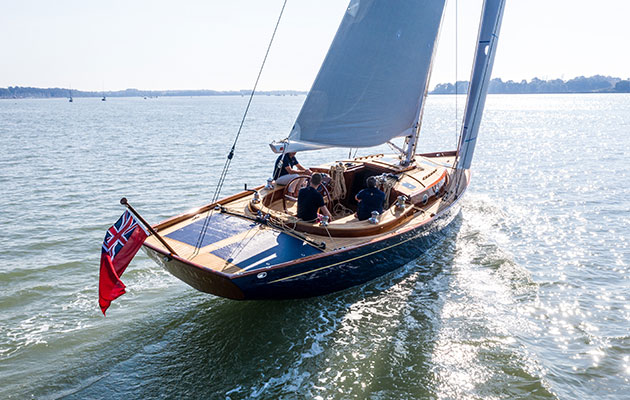
ON TEST: Spirit 44e – the sustainable future of sailing?
A wooden boat that blazes a trail for modern technology and sustainability sounds too good to be true. Theo Stocker…

First look: Southerly 42 – bluewater beauty
There are few high-end bluewater cruising yachts that can boast a draught of just 84cm (3ft). While this increases to…
One step too far
If I had one criticism of this otherwise spotless interior, it would be the number of little level changes that connect the spaces.
We counted 12 steps in total, besides the companionway.
While they maximise the volume, they also present a tripping risk.

The hull form includes a plumb bow to stretch waterline length, and carries its beam well aft, controlled by twin rudders. Credit: Brian Carlin
One of the reasons for these steps is clear: the saloon sole is raised somewhat in order to create space for the tankage beneath, as well as enjoy the views from the deckhouse windows.
And there, at least, the benefit is overwhelming, because you can easily inspect each tank, as well as the batteries and other equipment.
Custom joinery adapts the galley storage to your crockery and glassware.

The galley of the Oyster 495 is well laid out for use at sea
Standard is a four-burner hob and oven from GN Espace, side opening boat fridge plus an optional freezer and microwave.
Another highlight is the huge chart table.
There are those that scoff at the waste of space in a digital age, but anyone undertaking blue-water cruising knows the value of this space.

The saloon deckhouse leaves the foredeck clear for sail handling, lounging, or dinghy stowage. Credit: Morten Strauch
B&G instruments are the standard choice. The main interfaces are touchscreen displays that drive C-Zone digital switching , but key kit still features two-pole manual switches.
‘We wanted to introduce tech into the boat, but we had to make sure that if something breaks down mid-ocean you could fix it,’ explains Gibson.
Down steps aft, the owner’s cabin is clearly inspired by the big Oysters.

The engine compartment is well insulated and has ample space for a genset and other systems. Credit: Morten Strauch
The island bed measures 140cm across and features an elaborate fabric headboard that shows off the new styling to maximum effect.
There’s the option of a huge TV on the forward bulkhead, plus a vanity table and a sofa.
A luxurious ensuite heads features a separate shower, reached – you’ve guessed it – down another step.
The second cabin lies in the fo’c’sle and it runs to another good sized semi-island bed.

The boat remains a medium-heavy displacement cruiser, but the new hull shape adds extra performance. Credit: Richard Langdon
Having shared this space overnight with the photographer, I can attest to the comfort, and the natural light.
There is a third cabin to starboard with a pair of useful bunks, sharing the forward heads and shower. Finish quality is, as you’d expect, excellent.
In the end, Oyster has been ambitious in trying to squeeze in the features of its larger boats onto this design.
But it has been a successful project and, even as we hove in sight of Kiel’s green approaches, it was all too easy to imagine settling in and heeding the call of the high seas.
Verdict on the Oyster 495
New focus from Oyster and some modern hull design courtesy of Humphreys have given the Oyster 495 a modest performance boost and some welcome contemporary features.
However, she remains very true to Oyster’s keystone values of safety, seaworthiness and comfort. And in that sense, at least, she is not a radical boat.
Her layout, too, would be familiar to an Oyster 49 owner from 2001.

The Oyster 495 is built for serious long-distance cruising. Credit: Brian Carlin
There’s plenty of technology here – digital switching, plotters galore, good AV options and hydraulic sail controls. But it is not dressed up to be flashy.
The boat is solid, well-built and beautifully finished. She is easy to handle, capable and well organised.
Our only misgivings were about the less-than-easy halyard handling, and reliance on hydraulics for sail trim.
It’s all very neat, but is that really the priority for blue-water cruising?
As to whether she represents the world’s best 50ft blue-water yacht, time will tell, but with 16 boats sold off plan, some buyers clearly think so.
Would the Oyster 495 suit you and your crew?
Oysters are the stuff of dreams, and the new 495 is no exception.
If money were no object, and it needs not to be for this boat (our tricked-out test boat cost £1.6m ex-VAT or £1.92m inc VAT), then this is a vessel custom made to fulfil blue-water cruising hopes.
She would best suit a family with a steady flow of visiting friends, or a mix of older and younger kids.

The integral bowsprit on the Oyster 495 facilitates the setting of various offwind sails to maintain passage speeds. Credit: Brian Carlin
The disparity between the aft and fo’c’sle cabins rules out a project involving two couples.
She would also work well with a couple and some paid hands, although the ease of sail control and trim makes her perfectly viable for sailing solo or two-up.
There’s no reason that you couldn’t take the 495 up Britain’s rivers and estuaries, with her 2.28m draught and option for a 1.83m shoal keel.
But a boat of this capability demands to cover miles.
Sail round Britain , up to Svalbard , round the Mediterranean or around the world – the boat could undoubtedly handle it all with aplomb – but make sure you’re stretching her legs.
Solid, well-built and beautifully finished

The global authority in superyachting
- NEWSLETTERS
- Yachts Home
- The Superyacht Directory
- Yacht Reports
- Brokerage News
- The largest yachts in the world
- The Register
- Yacht Advice
- Yacht Design
- 12m to 24m yachts
- Monaco Yacht Show
- Builder Directory
- Designer Directory
- Interior Design Directory
- Naval Architect Directory
- Yachts for sale home
- Motor yachts
- Sailing yachts
- Explorer yachts
- Classic yachts
- Sale Broker Directory
- Charter Home
- Yachts for Charter
- Charter Destinations
- Charter Broker Directory
- Destinations Home
- Mediterranean
- South Pacific
- Rest of the World
- Boat Life Home
- Owners' Experiences
- Conservation and Philanthropy
- Interiors Suppliers
- Owners' Club
- Captains' Club
- BOAT Showcase
- Boat Presents
- Events Home
- World Superyacht Awards
- Superyacht Design Festival
- Design and Innovation Awards
- Young Designer of the Year Award
- Artistry and Craft Awards
- Explorer Yachts Summit
- Ocean Talks
- The Ocean Awards
- BOAT Connect
- Between the bays
- Golf Invitational
- BOATPro Home
- Superyacht Insight
- Global Order Book
- Premium Content
- Product Features
- Testimonials
- Pricing Plan
- Tenders & Equipment

Maegan: The Oyster yacht built for bluewater cruising
“I have a very interesting statistic,” starts David Tydeman, CEO of Oyster Yachts . “We looked back over the last 300 boats we’ve built and found that less than 20 per cent had a mooring or a berth. They were mobile. I love that: that’s what Oyster is about. We build boats for sailing, not for marina or regatta glory.”
There’s a sense of irony in his last statement, as Maegan has had a successful racing career so far. In 2015, she finished her first bout of racing at the Loro Piana Superyacht Regatta in Porto Cervo, coming sixth in her class; just a week later the same yacht topped her class at the Superyacht Cup in Palma; and in March 2016 she finished second in her class at the Loro Piana Caribbean Superyacht Regatta .
In its 42-year history, Oyster has garnered a reputation for building solid, high-quality bluewater cruisers, at home on the high seas and often encountered in the most remote destinations . I am quite surprised, then, when we head out into a near-windless Med for a trial sail and discover that far from being a chunky, heavy, ocean thoroughbred, this modern 24 metre is light, nimble and – when it comes to sailing – remarkably easily driven.
With the breeze hovering between 2.5 and four knots, we hoist the in-boom furled main and unroll the blade jib, and with a gentle hand on the wheel Maegan moves. At 30 degrees apparent, we’re clocking close to five knots — more than a knot above true wind — and it’s a similar story when we bear away and try the furling Code 0. With the apparent just forward of 90 degrees, she ticks along at a knot above true wind.
She’s not just a light airs special, either. “We’ve had her surfing at 16 knots, on the passage past Portugal, without much effort,” beams Maegan ’s captain James Micklem. “And she really enjoys 10 to 12 knots of wind.”
A glance around the aft deck area shows the thought that has gone into Maegan ’s design and layout. Her winches are all positioned aft of the steering pedestals and her two-to-one mainsheet runs under the deck from the end of the boom. The blade jib forward means the jib tracks are kept to the aft end of the foredeck and her sheets run close to the coachroof coamings.
Coupled with outboard chainplates, the side decks on Maegan are blissfully clear of obstructions, while the large guest cockpit is safely away from lines, sheets and sailing controls. Runners and an inner forestay add security for heavy weather sailing, but both can be removed. It all adds up to a yacht that is both easy to handle, yet safe for guests.
Maegan ’s high topsides mean that there are no steps fore or aft on deck, and her foredeck has been kept clear through an optional forced-air system for the interior, so foredeck dorades are a thing of the past. Removable dinghy chocks can seat a 4.5 metre tender forward — easily launched using a pole system on the mast — while with the tender gone a large lounging deck-space forward complements the broad, flat aft-deck area. The guest cockpit itself features a generous teak folding table complete with built-in fridge, while a large sliding hatch leads below.
On descending the steps, the first thing you notice is Maegan ’s huge lower saloon. Generous seating either side invites you to relax, while the three distinctive vertical hull-ports either side are at exactly the right height to enjoy a water-to-horizon view.
The 825 can be specified with different saloon configurations, including a raised saloon and a deck saloon, both of which lose the hull ports but which offer seated views through the coachroof windows. You also gain more space for the engine room, which is below the saloon sole, although even the crawl space on Maegan is less of a disadvantage than you might think.
“The engine room layout is much improved over the 82,” says Micklem. “It’s more accessible, and there’s more in one place so you don’t have to go lifting guest floors to access pumps – everything is contained in one area.”
For Maegan , forward of the saloon lies a chart table and the central monitoring system. The longitudinal galley links the guest areas with the crew space, and the galley itself is well equipped for long-distance cruising — although any number of configurations can be specified.
There is a fourth guest double cabin, although as Maegan runs with three crew this is used as a very generous captain’s cabin. The crew space includes a small laundry area, twin cabin for crew, head-cum-wet room and a watertight hatch through to a large foredeck sail locker.
The owner and guest accommodation is set aft, with the full-beam owner’s double cabin towards the stern. The positioning is deliberate: if you’re a sailing yacht owner who likes passage-making rather than flying out to the boat post-delivery, this is the most comfortable area. Maegan ’s seaworthy touches are evident in the addition of hooks and eyes in the deckhead for lee cloths.
The master en suite is set to port and the cabin layout itself can be easily customised according to desires. Take away the sofa and a desk can be put in its place, or another wardrobe can replace the vanity unit. In fact, the entire interior arrangement can be customised and reconfigured – one 825 has had the entire aft area set out as a single, large, owner’s apartment. Another has replaced the guest double with the galley.
As Maegan stands, an en suite guest double to starboard and an en suite twin cabin to port – which converts to a double – complete the guest quarters.
The décor on Maegan is light and contemporary, featuring limed oak and large expanses of white panelling. A walnut detail runs here and there, linking the palette with the walnut floor. It’s an incredibly calm space to be in, clean but not sterile, airy but not clinical.
As we sit back on the dock in Porto Cervo, one of Maegan ’s siblings – an Oyster 885 called Karibou – slides into the berth next door. It begs the question: why, in the new line-up, did Oyster design two yachts so close in size, separated by just two metres? “We started with the 885 in early 2010, with the design concept,” Tydeman explains, “and the first one hit the water in 2012.
“We committed to the 825 about a year after the design of the 885, so in 2011. We learnt from the 100 and the 125 that as you step over the 24 metre loadline rule, you have to provide much more space for the crew if you want to be commercially coded,” he continues. “So I sat with designer Rob Humphreys and we decided to start with a boat just an inch underneath that limit – the 885 was designed to have two crew cabins and four guest cabins.
“But the decision to go with the 825 was a brave one – could we afford to invest in two boats that were only [two metres in length] apart? We decided there was a market, as one is a six-cabin boat, and the other is a five-cabin boat. Also, 80 feet (24 metres) is the smallest size you can sensibly and socially separate crew and owner.” It is a gamble that has paid off: Oyster has sold six each of the two models so far.
So how about that performance aspect? “We chase performance, but in a different dimension to racing in a regatta,” Tydeman continues. “We measure performance in terms of how far you can sail without having to refill the water and fuel tanks. If you look at our tankage we have twice the capacity across the board of similar yachts, and we also define performance in terms of quietness, vibration and the ability to enjoy long-distance cruising at a sustainable speed.”
As a natural evolution of the Oyster 82, the 825 has already been proven to be some 10 per cent faster. Moreover, that tankage — and the fact that the 825 drinks just 12 to 14 litres of fuel per hour at cruising speed and with everything running — means Maegan has transatlantic range under motor at nine knots, and with the throttles eased back she can also boast potential transpacific range if motor-sailing.
With such space in her interior and flexibility in her configuration — you really can customise the yacht to your preferred layout and equipment — coupled with sailing performance that can handle everything from zephyrs to the worst the oceans can muster, Tydeman’s opening statistic starts to make sense.
Why would anyone, with a yacht like Maegan , choose to stay in a marina? Eighty per cent of the last 300 Oyster owners agree. After all, the world is your oyster – and the Oyster 825 is a real pearl.
First published in the August 2015 edition of Boat International
More about this yacht
More stories, most recent, from our partners, sponsored listings.
- THE PRINCESS PASSPORT
- Email Newsletter
- Yacht Walkthroughs
- Destinations
- Electronics
- Boating Safety
- Ultimate Boating Giveaway

- By Dennis Caprio
- Updated: March 15, 2013
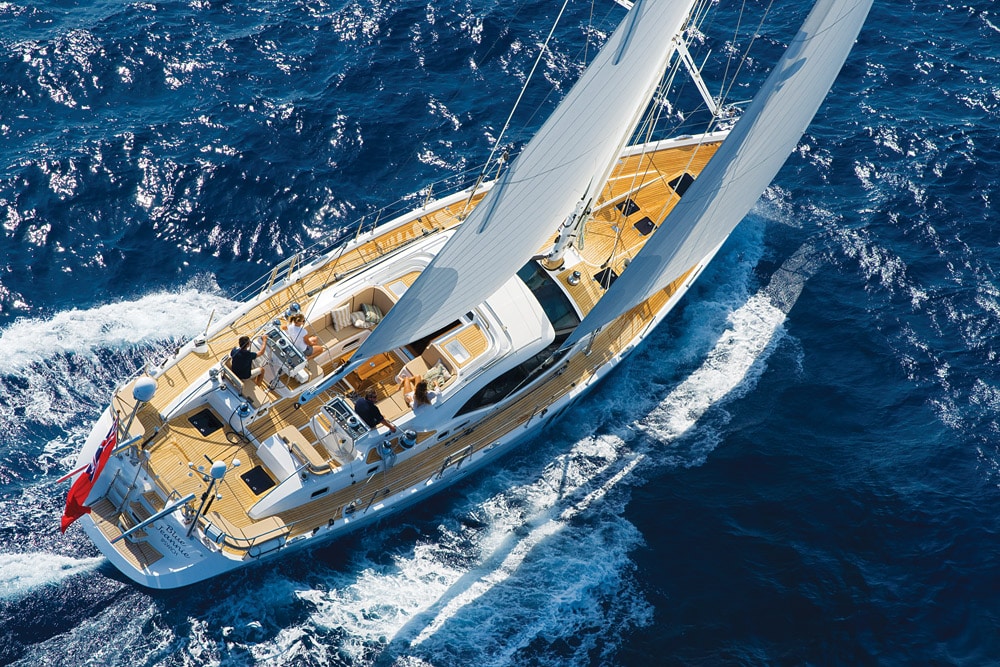
Sailing an Oyster has always sparked my wanderlust, but it usually has gone into remission a day or two later. After sailing the new 625 off Miami, I fear that my wanderer’s disease has gone terminal. Even though we were in the warmth of Florida’s sun, visions of destinations among the high latitudes continuously looped through my brain as I steered her on a close reach in a moderate breeze. She loped along, flirting with her theoretical hull speed of 10 knots while we played with the mainsail and 150 genoa to hold our speed, in spite of the minute variations in the wind’s direction and strength. She responded quickly and accurately to changes in sail trim and input at the wheel. The rudder spoke to my hands via the wheel — a pleasant conversation that made me feel part of the boat.
Throughout most of Oyster Marine’s lifetime, it has stressed robust construction, high-quality equipment and joinery, and thoughtfully designed accommodations for its cruising yachts. Oyster was among the first to raise the amidships salon a couple of steps higher than the forward accommodations and enclose the area within a handsome deckhouse. The company’s brochures referred to this design as a “deck saloon,” the first of which, the 46 designed by Holman & Pye, splashed in 1980. Hull No. 9 of the 46, Leisurely Leo, was the first of many models to circumnavigate the globe. Other sailors on adventurous passages aboard their Oysters built the marque’s cachet as news of their exploits circulated among the cruising community. Although the early Oysters weren’t the fastest boats of the day, their relatively heavy displacement, fine entry and U-shape forefoot allowed them comfortably to maintain maximum speed over a wide range of conditions.
_ Click here to see a full photo gallery of the Oyster 625._
The 625 replaces the popular 62, which Oyster developed from the 61 and built for about 10 years, and, like all the latest models up to 99 feet, came from the drawing board of Rob Humphreys. He established a reputation early in his career for designing fast racing boats, and he’s applied this talent to Oyster’s line. Beneath the waterline, the 625 still has a fine entry and U-shape sections forward, but her entire underbody is shallower than that of her predecessors. Even more important to speed and handling, though, is the substantial reduction in displacement.
Although these changes to the shape of the underbody and the lighter displacement give the 625 a livelier personality than her ancestors’, I was disappointed to see the mainsail unrolling from the mast. In the past, this type of mainsail didn’t have a great shape (often characterized by a hollow leech) and what shape it did have deteriorated with each roller-furled reef. In-mast furling still compromises the shape, but vertical battens and modern design and materials have reduced the disadvantages. I prefer the mainsail to have a substantial roach and full-length horizontal battens, but Oyster claims that most of its customers for the 625 have ordered in-mast furling, no doubt because it eases getting under way and reefing.
If I’d sailed her blind, I probably wouldn’t have noticed by feel that this yacht’s mainsail lived in the mast during its time off. Odd how prejudice fades away in the light of truth. You know, “if you can’t be with the one you love, love the one you’re with,” as Stephen Stills sang. I’ll wager that only a GPS could tell the difference in speed between our sea-trial boat and one with the standard rig.
Upwind, the 625 relies on her 150 genoa for the majority of drive. This sail’s clean leading edge and adjustable draft allow it to draw well over many points of sail, though tacking and jibing it can be a pain. Our experienced crew and powered winches made short work of handling the big headsail, and the 625 tacked as though she were smaller, quickly passing through stays. Catching her on the new tack at exactly the right moment spurred her into a deliberate, but satisfyingly quick, acceleration — as befits her role as a cruising yacht. We jibed her without drama in the light-to-moderate winds of the day, because we didn’t need the running backstays. In high winds and rough seas, the crew would have to jibe the runners, as well as tend the headsail.
In keeping with current philosophy, Oyster has divided the cockpit into a lounge just abaft the companionway and, two steps up, a working end next aft. This arrangement lets nonsailors relax and enjoy their experience in safety, without getting in the way of the crew, and gives everyone aboard a place to hang out for sunset cocktails when the boat’s at anchor. The primary and secondary winches share a flat, each side forward of the helms and outboard of the guest’s cockpit. Crew members tend the genoa from the side decks, pushing buttons on the outboard side of the coaming.
Sight lines from the helms are excellent, in part because the working cockpit is high, relative to the low-profile deckhouse. A bench on both sides of the cockpit encourages the helmsman to sit, and the perch is quite comfortable. The wraparound seat back on each bench let me snuggle into the outboard corner of the seat and steer comfortably from the low side.
Her continuous mainsheet loops from a slot in the afterdeck, through a block on the end of the boom, back into the slot and then to port, where it emerges from a slot in the coaming then forward to a winch inboard of and slightly abaft the portside helmsman bench. The helmsman should be able to reach it from either side, though a dedicated trimmer will make tending the main easier.
Any cruising boat worth the moniker has to coddle her crew and guests in safety and comfort belowdecks, and the Oyster 625 is more than capable in this regard. Humphreys designed her as a live-aboard cruising yacht and, germane to that purpose, carried a large percentage of her maximum beam well aft. This allows a wide master stateroom and a lot of surface area under the waterline to help her surf down the face of waves. The master suite lives under the working cockpit and gets natural light from portlights in the coaming and in the topsides. In spite of our semitropical location, I immediately pictured myself and a significant other sharing this cozy area on a cold and dreary day somewhere in Labrador — maybe one of us stretched out on the settee and the other wrapped in a down duvet, sipping champagne and reading. Two translucent hatches in the overhead open onto the afterdeck. The only other way out of the master is via the linear galley on the port side. Opposite the galley and on the starboard side of the engine room is a stateroom with upper and lower berths. These are terrific sea berths, being close to the companionway and located very near the yacht’s center of buoyancy. Motion there will be as good as it gets in any kind of seaway. On the other hand, the shower stall in the master head intrudes on this little cabin. If I were planning to cruise the world aboard the 625, I’d ask Oyster to make a workshop in this space and provide easy access to the engine room. Then I’d use the settees in the salon for sea berths if I could rig easily stowed lee cloths.
Maple woodwork and white overheads add to the cheeriness of the 625’s interior. Three large vertical windows in the topsides port and starboard light up the salon and give the occupants a sloshy view of the yacht’s progress. I love to watch the water rush by on the leeward side of the hull.
In addition to the standard layout, Oyster offers one with crew’s quarters (instead of stowage) in the forepeak. The tight space has an upper and lower berth, a toilet and a sink. Less these quarters, the 625 has sleeping space for eight in four staterooms, which is wonderful for an extended family or the charter trade.
Oyster Marine has established its own extended family of owners. These yachtsmen regularly race one another, sail in rallies and gather for rendezvous. This strong family feeling helps keep owners loyal to the brand, and it attracts new ones. The 625 promises to perpetuate this tradition — more food for any sailor’s soul.
LOA: 63’7″ LWL: 56’7″ Beam: 17’10” Draft (standard): 9’2″ Draft (shoal): 7’1″ Also available with SuperShoal keel centerboard Displ. (standard keel): 73,854 lb. Engine: 1 x 180 hp Volvo D4 diesel Fuel: 449 gal. Water: 317 gal. Sail Area (150 percent foretriangle): 2,538 sq. ft. Sail Area/Displ. Ratio: 22.3 Displ./LWL Ratio: 182 Base Price: $3.4 mil. delivered U.S.
Oyster Marine USA, 401-846-7400; oystermarine.com
- More: Oyster , Sailboats
- More Yachts

Ocean Alexander Unveils the Puro 35P Superyacht

Fountaine Pajot MY5 Reviewed
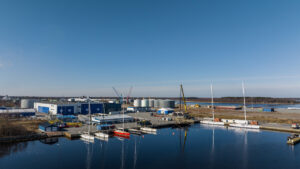
Luxury Yacht Giants Unite: Nautor Swan and Sanlorenzo Group Merger
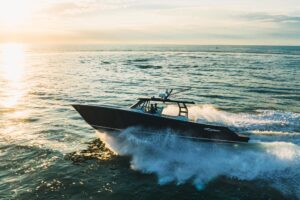
Halo 470 Reviewed

Smarter Boating Ahead: AI Tech Enhances Onboard Cameras
Cruising The Exumas

For Sale: Sirena 68

- Digital Edition
- Customer Service
- Privacy Policy
- Terms of Use
- Email Newsletters
- Cruising World
- Sailing World
- Salt Water Sportsman
- Sport Fishing
- Wakeboarding
Oyster 495: New Boat Review
By zuzana prochazka, join sail magazine's respected journalist, zuzana prochazka, as she puts the award-winning oyster 495 to the test in santa barbara..
Discover an in-depth exploration of the Oyster 495, a 50 foot bluewater cruiser meticulously designed with a deep appreciation for its heritage and a relentless pursuit of perfection. Join Zuzana Prochazka as she highlights the smooth and tranquil sailing experience, emphasizing the ease of handling and the 495's ability to gracefully navigate varying wind conditions.
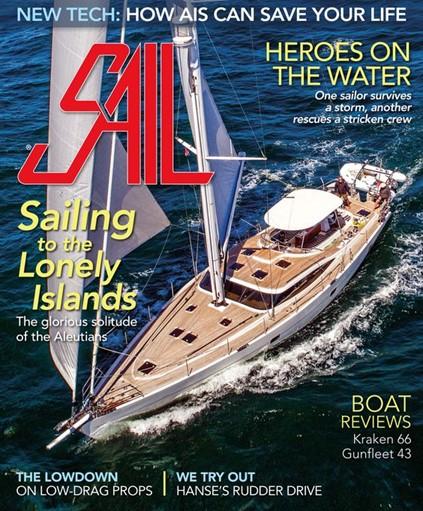
With an eye toward its past in boats under 50 feet, Oyster delivers a new design that puts bluewater sensibilities first in every detail.
Southern California was serving up a strong dose of its May Grey/June Gloom weather when I arrived in Santa Barbara. With a thick marine layer and cool temperatures, the breeze was light and the seas were flat. I had arrived to test the Oyster 495, a new model from a family of cruisers I’ve held up as ideal true bluewater boats for as long as I can remember.
To my surprise, it was hull No. 1, which had cruised the Mediterranean last summer as Carpe Diem. She had been shipped halfway around the world to her new owner, Rob, who renamed her Genevieve after his granddaughter. Rob’s aim was to find a boat he could singlehand along coastal jaunts, and he bought her without ever setting foot aboard. Given how easily he could manage the sails, he seemed happy with his choice.
The Oyster 495 is a from-the-keel-up new design and an ode to Oyster’s roots. It fully embraces proven offshore sensibilities and is a near replica of her bigger siblings. The design sticks unapologetically to a winning formula of stuff that works.
“At the end of the day, it’s a small Oyster, but it’s got to give you the feel of a big Oyster,” said Chris Lock, the 495’s design lead, in a promotional video about the boat.
Richard Matthews, Oyster’s original founder, helped head up the boat’s planning and development and noted the company’s “legacy of the other sub-50-footers…we felt it was time that Oyster got back into a boat of under 50 feet, but one that brought up to date the modern thinking on what an Oyster yacht should be…a truly bluewater, liveaboard, ocean-going yacht.”
Over the past five decades, boat design has evolved into a greater focus on convenience and sprawling spaces, but some of these modern concepts that look great at a boat show aren’t so practical offshore. That’s where Oyster shines with watertight bulkheads, high cockpit coamings, pre-rigged preventer lines, deck dorades, generous tankage, a low center of gravity, and copious deck stowage. These are the building blocks of a practical cruiser meant for bluewater work.
To bring this boat to market, Oyster implemented a new production process in a new manufacturing space in Hythe on England’s south coast. Construction features include a solid laminate, heavily reinforced, below the waterline as well as in the keel and forward areas of the hull. The structure combines composite stringers and frames for strength, and topsides and deck have closed-cell foam cores for strength and insulation; on deck, this is reinforced with plywood in higher load areas.
Related articles
Discover the latest news from Oyster
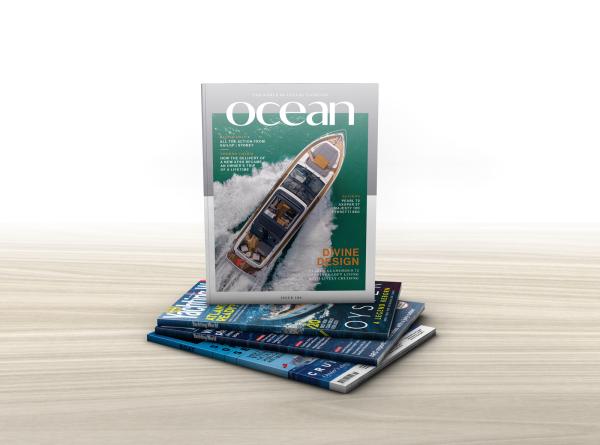
Sign up to our newsletter
Be the first to hear about new launches, exclusive events and all things Oyster
© 2024 OYSTER YACHTS

OYSTER WORLD RALLY
Entries for the Oyster World Rally 2028-29 are now open. Embark on the sailing adventure of a lifetime
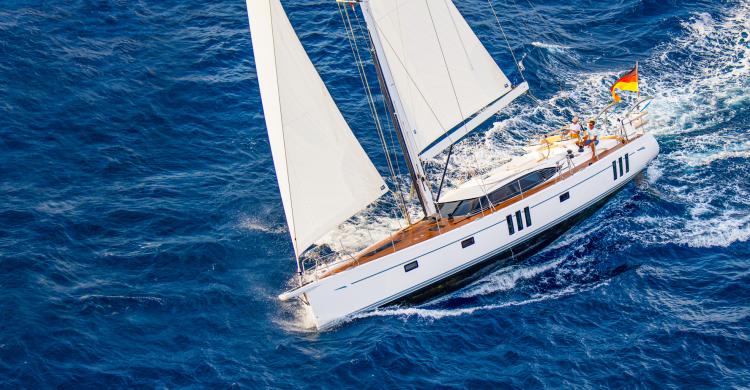
The new 565 Series II
The pursuit of perfection continues
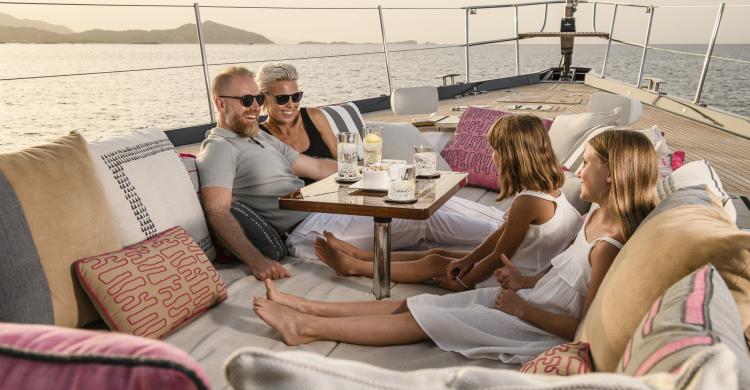
Oyster Charter
Experience exhilarating sailing, luxury and style on an Oyster charter

New 565 Series II
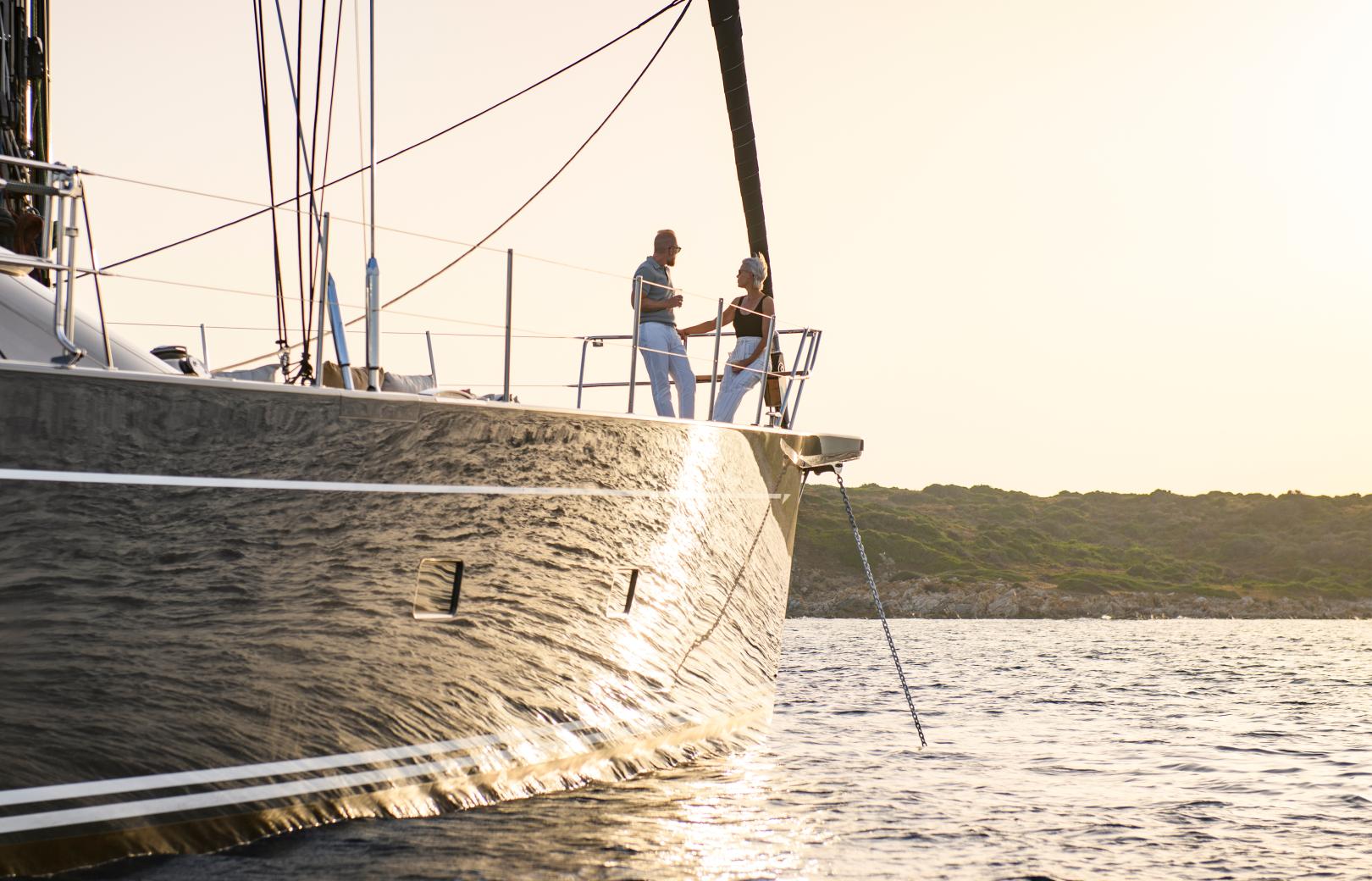
LUXURY CHARTER
Experience exhilarating sailing, luxury and style on an oyster charter. personal, exclusive and uniquely oyster.
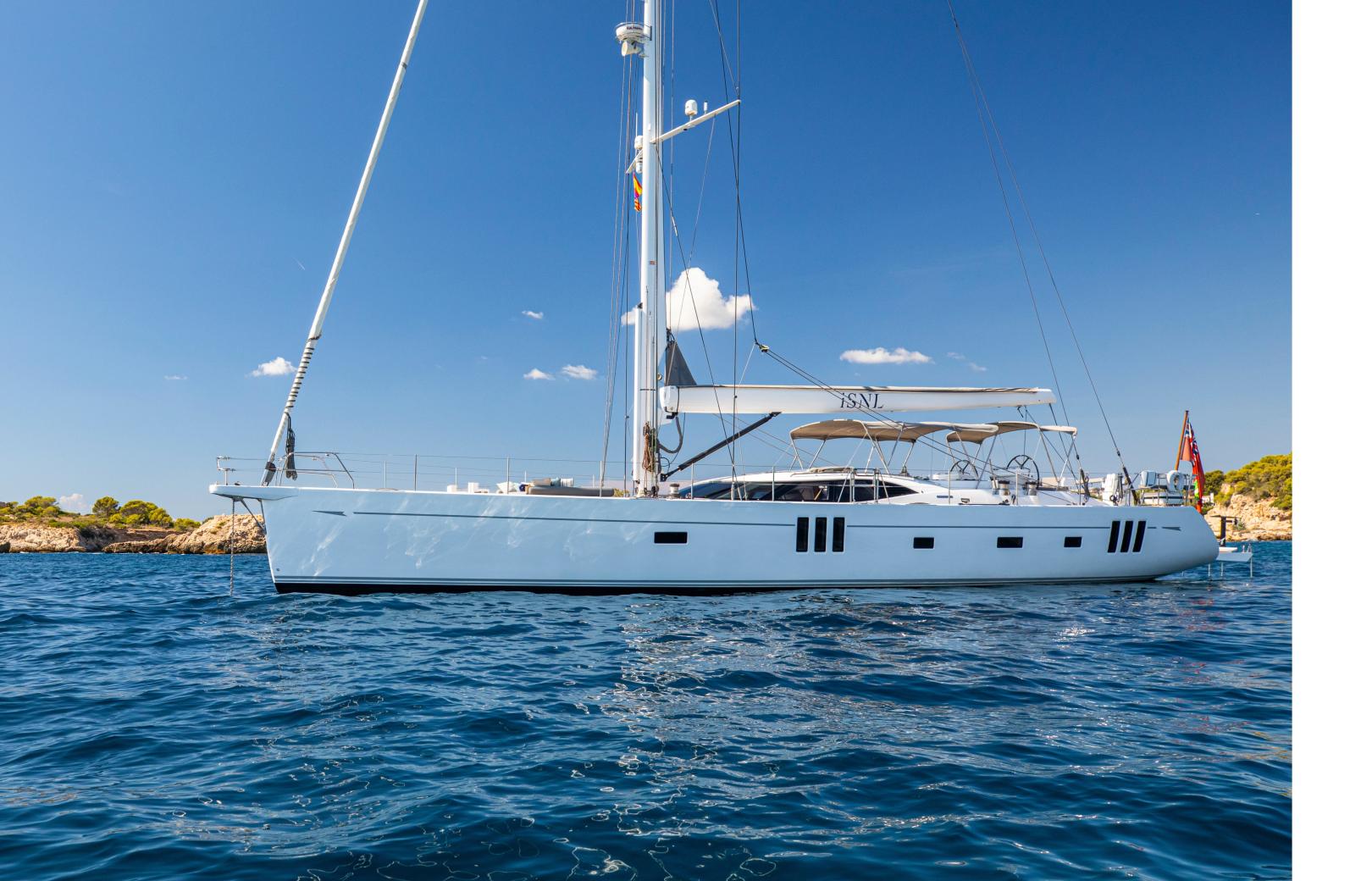
Oyster 825 iSNL
Discover this exceptional late model 825 with a unbeatable spec and a bespoke layout.
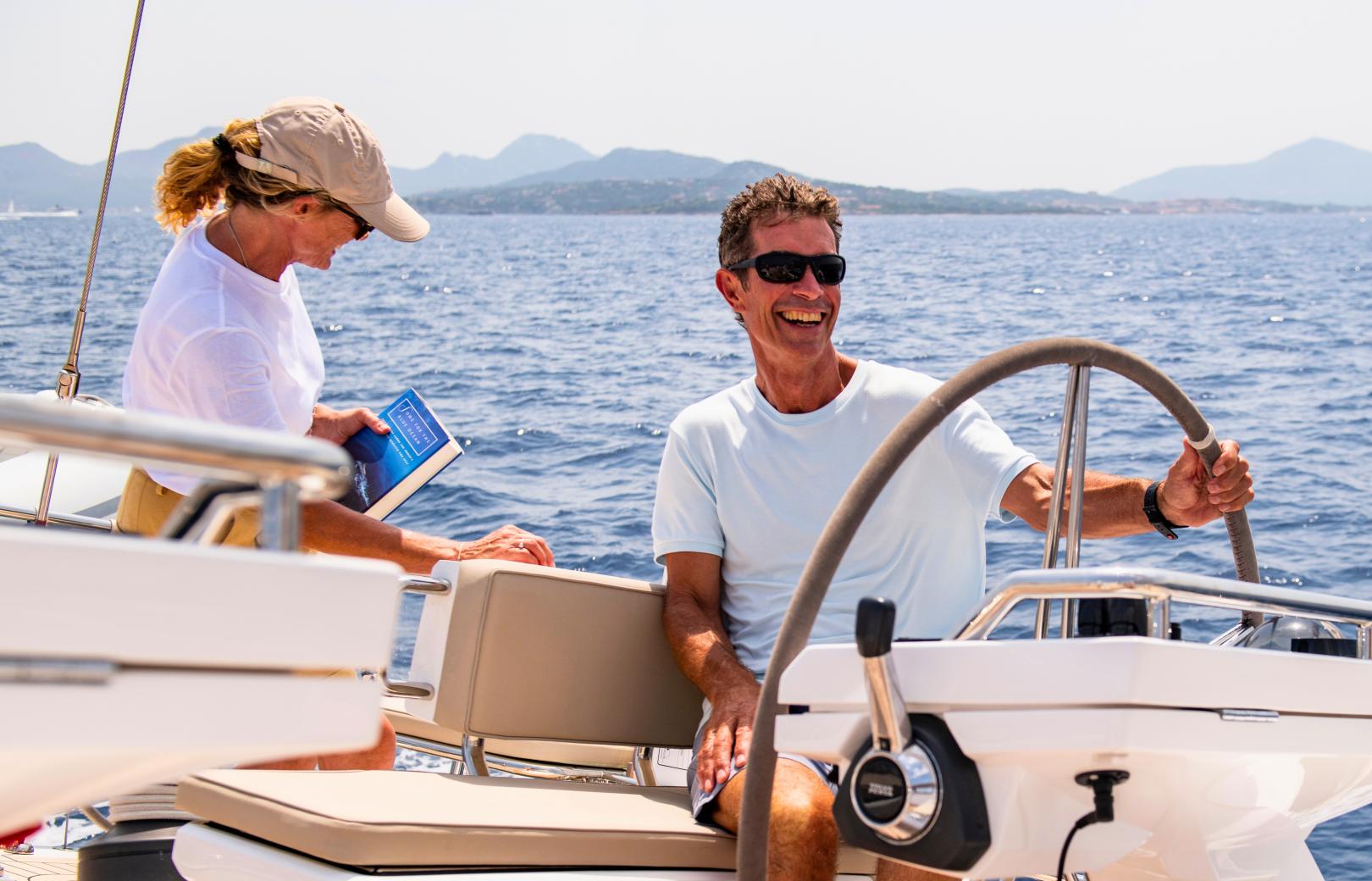
oyster ownership
Personalised care, unforgettable experiences and lifelong yacht support, oyster world rally.
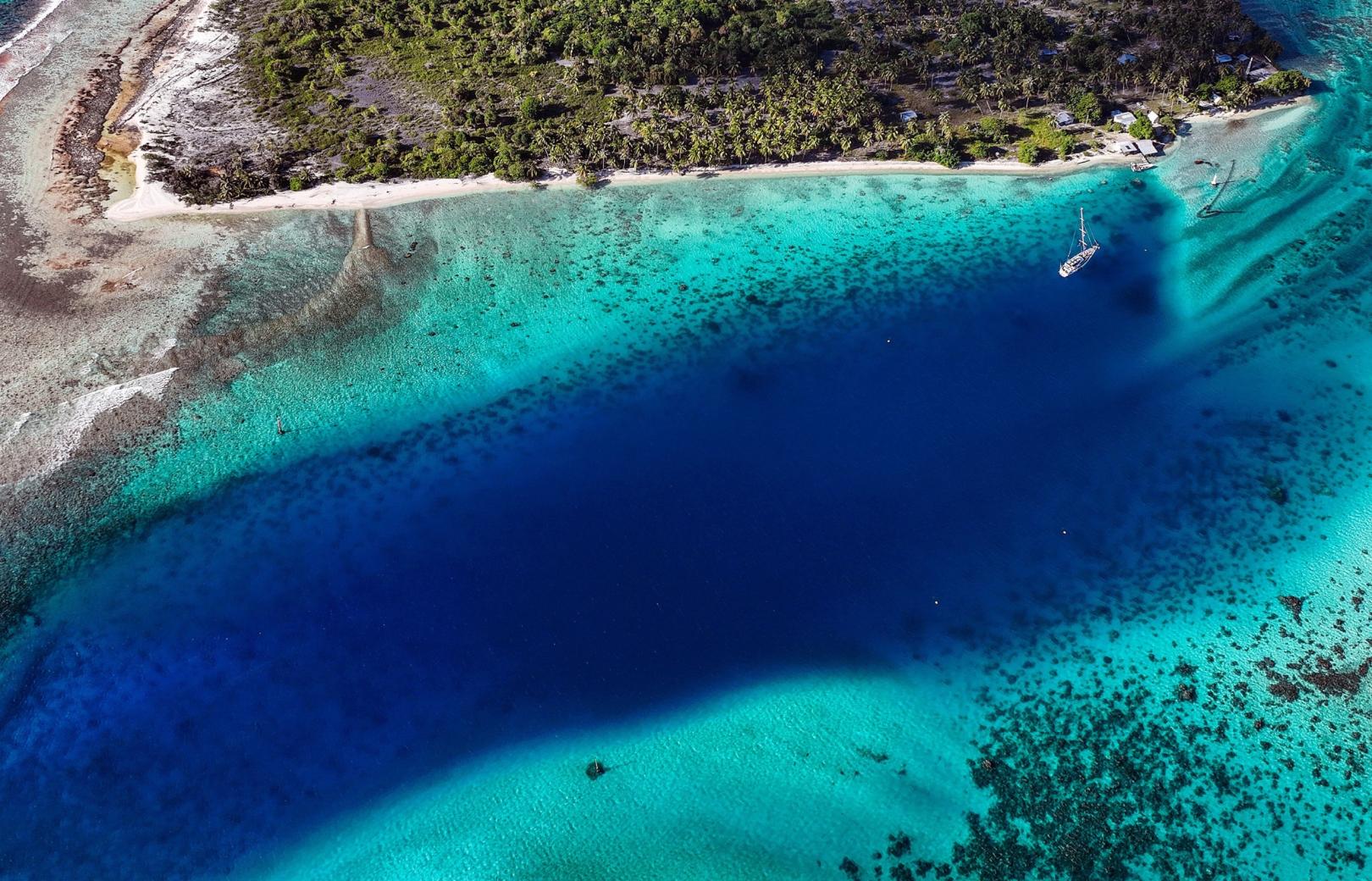

ENTRIES OPEN
Embark on the sailing adventure of a lifetime. entries are now open for the oyster world rally 2028-29.
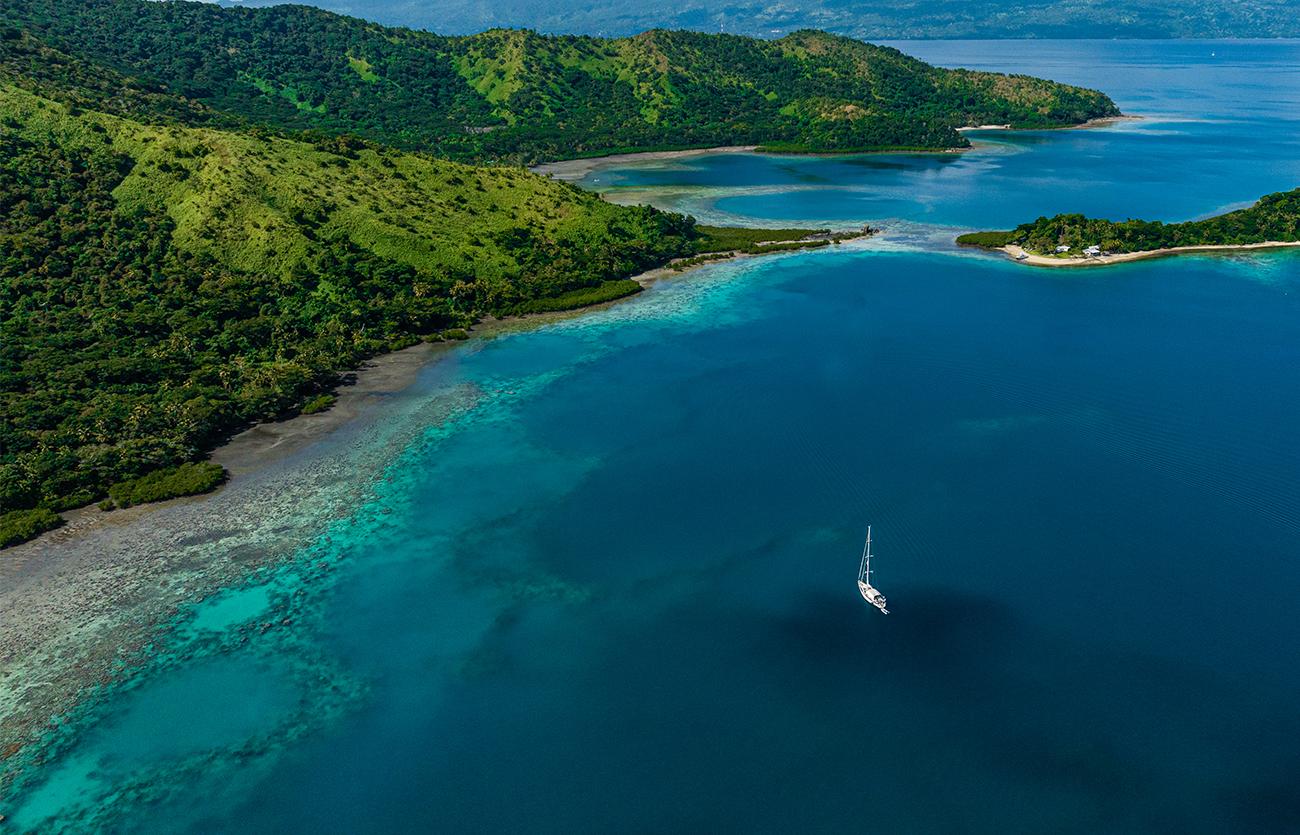
Follow the Oyster World Rally 2024-25 fleet live
Winner of European Yacht of the Year 2023. She is a new breed of luxury 50 foot yacht, offering effortless shorthanded sailing capability.
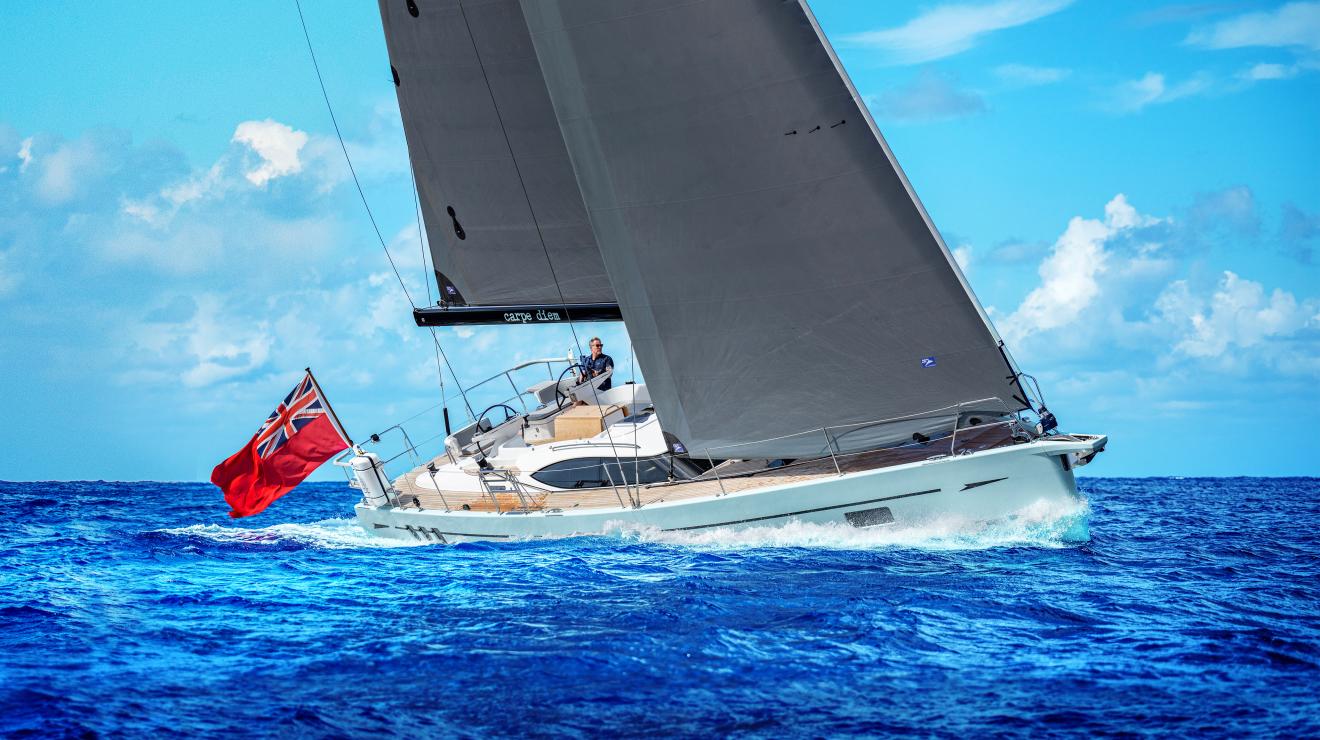
A magnificent, award-winning sub 60 foot sailing yacht, offering luxurious living space and outstanding shorthanded sailing capability.
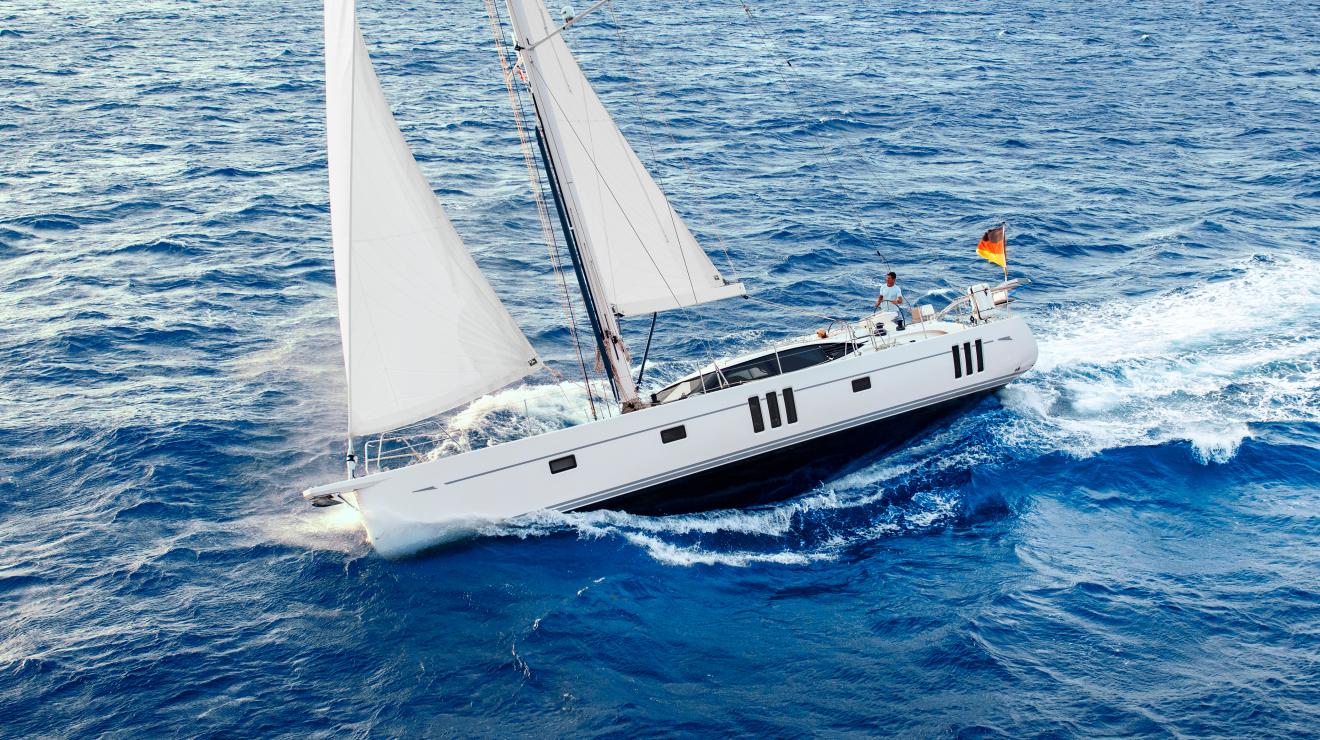
A beautifully proportioned 60 foot, luxury liveaboard bluewater cruiser, offering effortless shorthanded sailing capability.
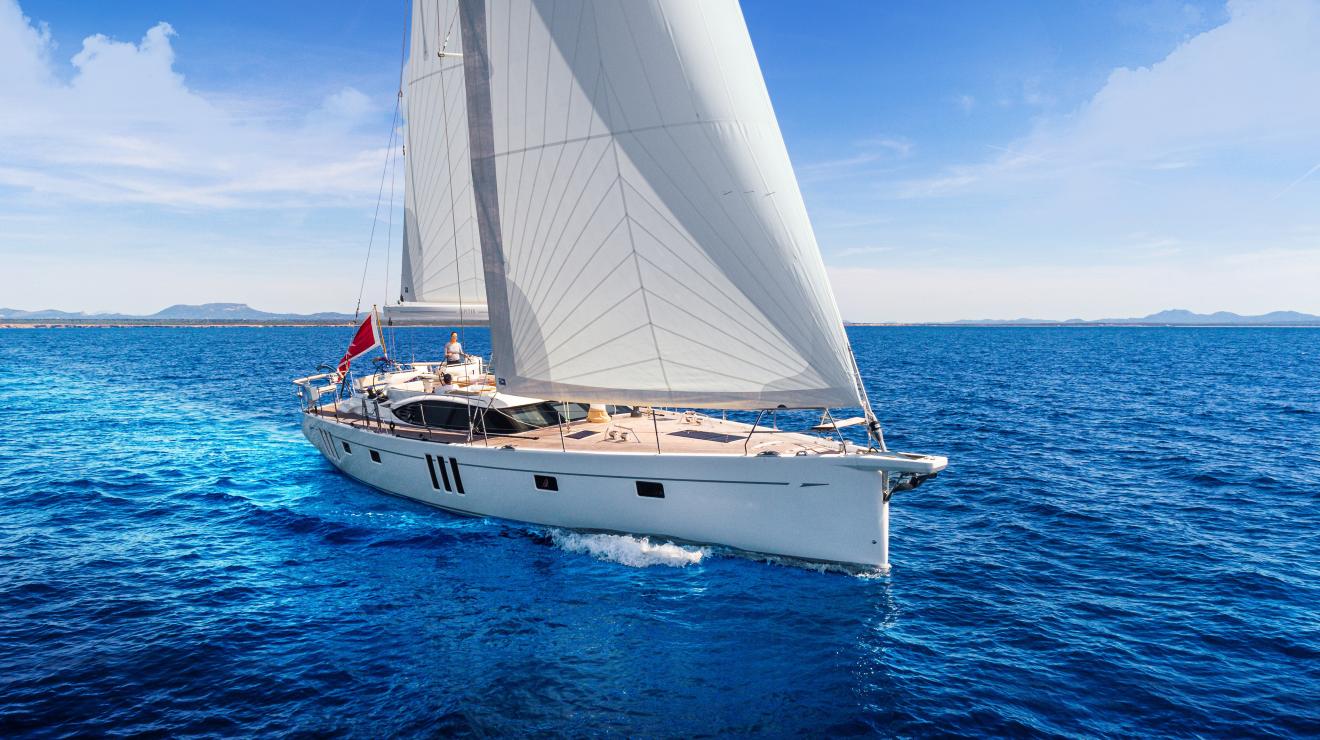
A superb sub 70 foot ocean sailboat offering versatile luxury living space and impeccable sailing performance.
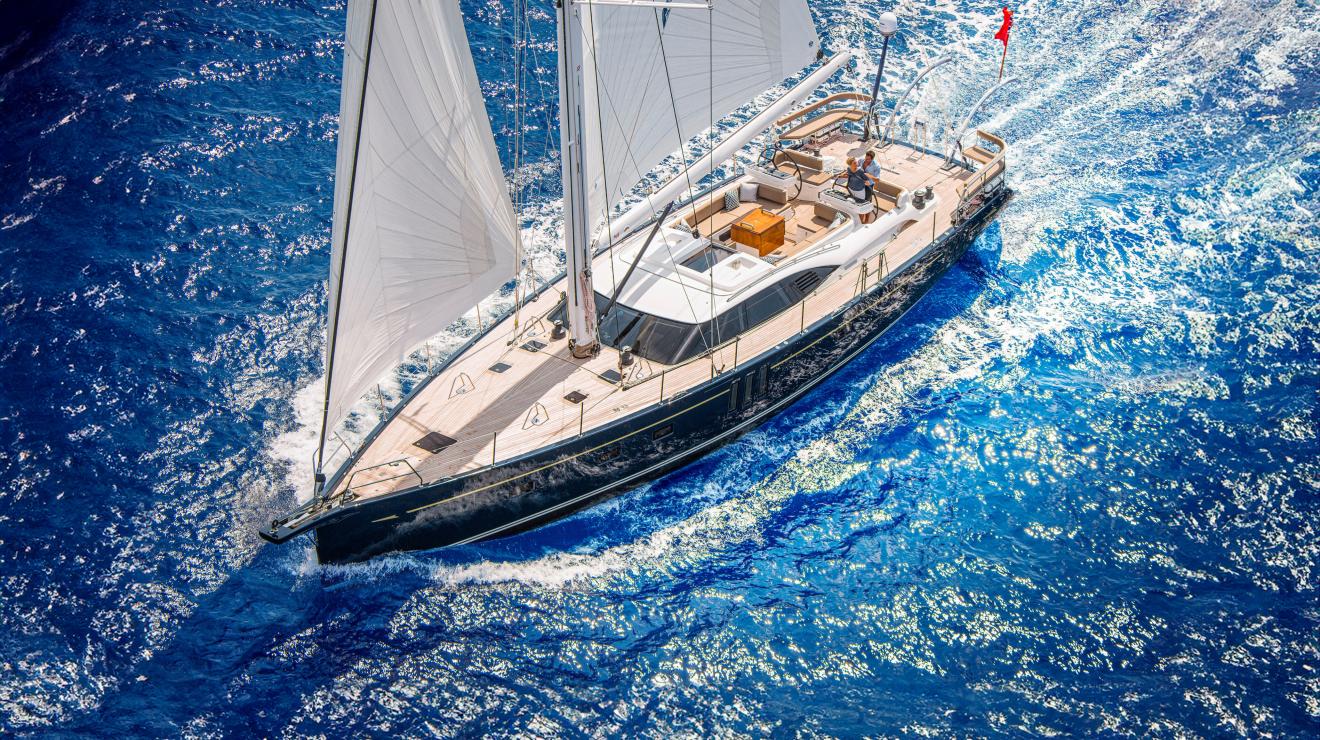
An inspired 75 foot yacht, offering infinite configuration options, generous luxury living space and flexible crew quarters.
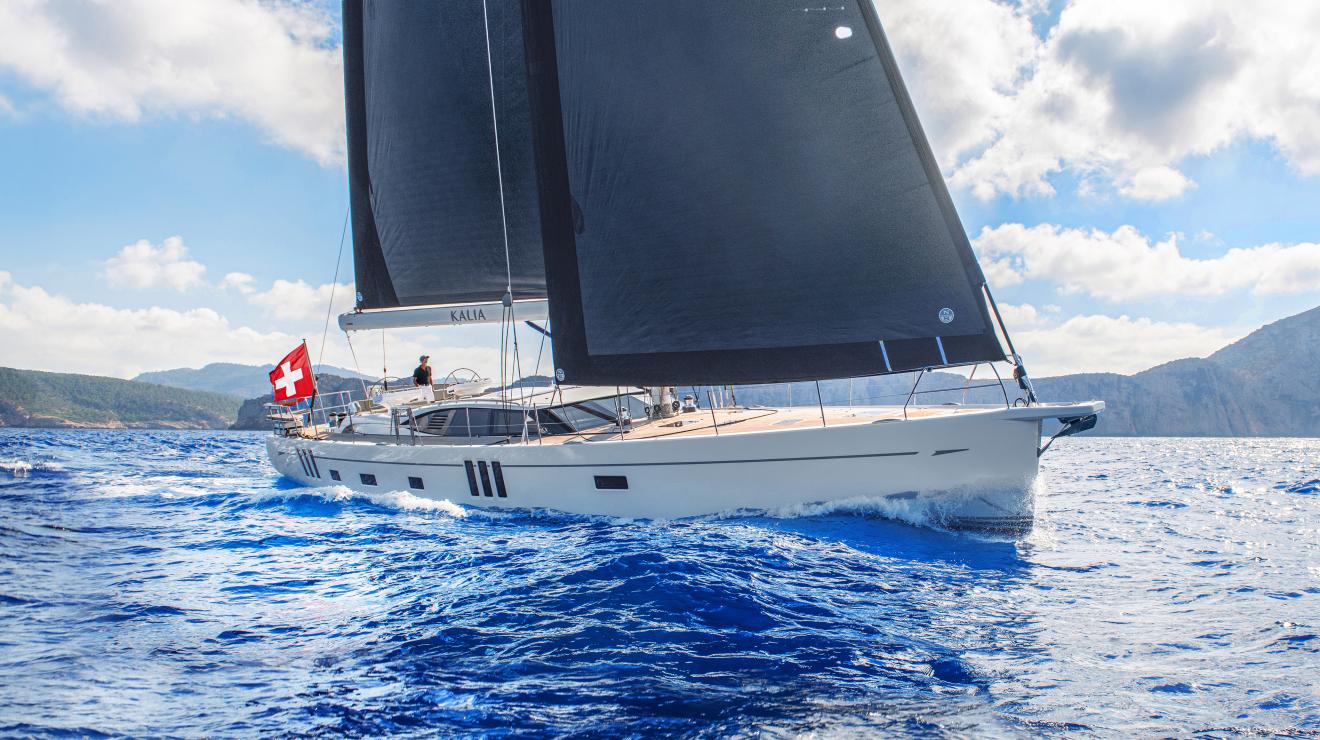
Oyster 885SII
The remarkable, iconic 90 foot sailboat, perfect for relaxed luxury voyages of discovery.
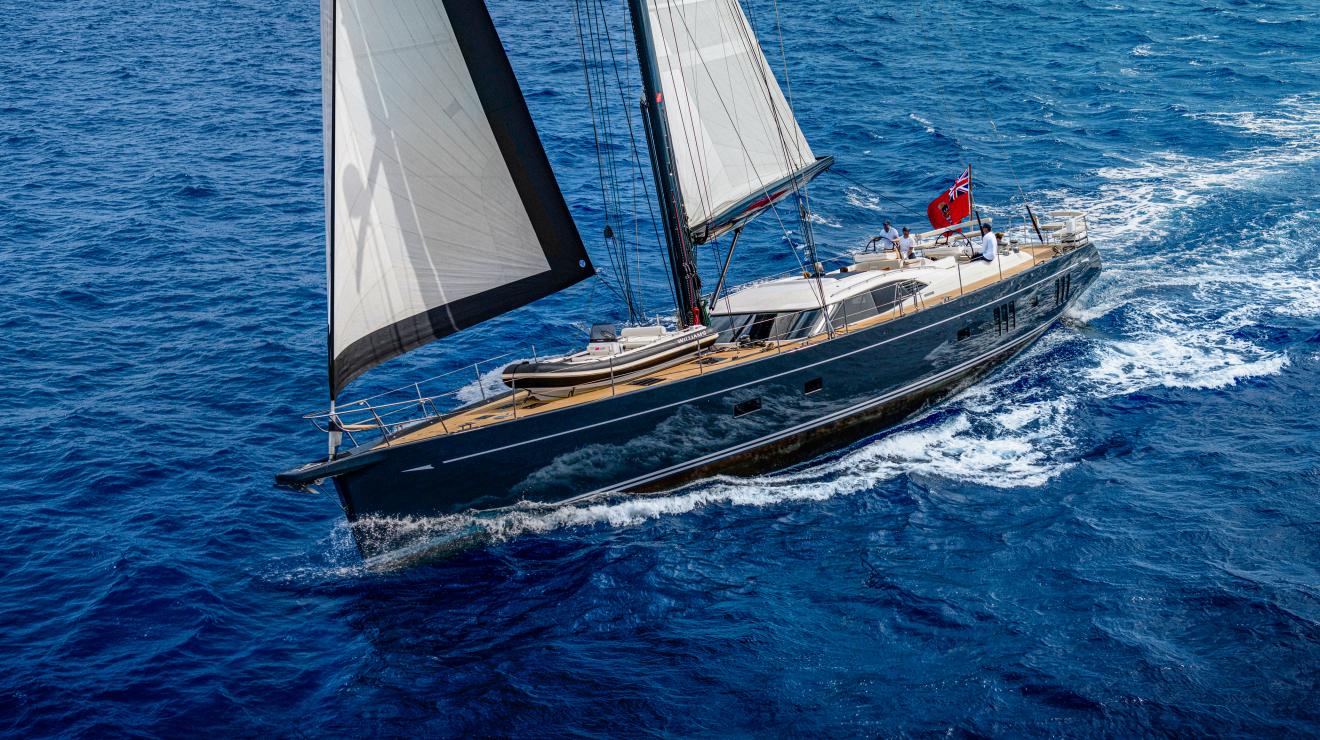
First name *
Last name *
Phone number *
Country/Region *
Attach CV *
Attach covering letter
Current occupation
LinkedIn profile

10 Best Sailboat Brands (And Why)

Last Updated by
Daniel Wade
December 20, 2023
There's no denying that sailors are certainly a passionate bunch. We’re so passionate about our boats that we always try going for the best sailboats. To make it a lot easier for you, here are the best sailboat brands.
Owning a sailboat is an indulgence that many of us only dream about but very few ever have the privilege of sailing the seas in what they can actually call their own.
While there's nothing wrong with renting a sailboat, the honor of owning one is certain what many sailors dream of.
With a perfectly crafted sailboat as company, gliding through the water, waves, and wind brings some sort of unmatched comfort and peace.
Add this to the fact that sailing takes you far away from the daily hustles and bustles that we've become accustomed to in our daily lives and you'll see why the life of sailing is very appealing to the masses.
But without a proper sailboat, all this fun and the good life of sailing are thrown out of the window.
Contrary to the widespread opinion, owning a sailboat isn't beyond anyone's reach. It's something that we can all achieve. But before getting into that, it's important to know some of the best sailboat brands.
The best sailboat brands will make your life as a sailor a lot easier and more fun. The best sailboat brands have, for decades if not centuries, mastered the art of woodworking. They've dedicated their skills and immense amount of their time to designing and manufacturing nothing but the best quality of sailboats in the industry.
So if you've been looking for the best sailboat brands from all over the world, you've come to the right place. We'll discuss the best of the best, something that will give you a perfect getaway from your normal life.
Table of contents
Must-Have Features for Your Sailboat
Before highlighting the best sailboat brands, it would be appropriate to jog your mind a little with some of the features that must be available in your sailboat.
Choosing a sailboat can sometimes be a matter of compromises. In other words, it's sometimes sensible to accept that a sailboat cannot have all the features that you desire.
As such, it's all about going with a sailboat that has the features that matter to you most.
For this reason, let's look at the most basic features that can make the difference in both safety and comfort while improving your sailing experience.
A Safe and Comfortable Sailing Cockpit
You'll most definitely be spending a huge amount of time in the cockpit. Whether you're keeping watch, trimming sails , helming, or just enjoying the scenery, there's no better place to do all these than from the cockpit. That being said, a good cockpit should have the following.
- Have a good depth for safety reasons and adequate drainage
- Should give you a quick and easy access to jammers, cleats, and other important parts of the winch system
- Should have a seat or seats that are about 35 cm high, 50 to 55 cm wide to provide ideal support
- The seats should be adjustable to offer maximum comfort and allow you to change your position
GPS Chartplotter
Use a GPS Chartplotter once and your sailing will never be the same without it. It not only allows you to map a course but is also a great way of ensuring that your sailboat exactly follows that course. It also gives you constant updates on ocean conditions, weather conditions , and potential hazards such as deadly currents and sandbars.
A GPS Chartplotter is also an important safety device that can help you in some very critical situations while out there on the water.
For instance, it has a man-overboard button that is essentially meant to allow you to receive coordinates of the exact location should someone fall off your boat.
Electric Winch System
This is an amazing addition to any sailboat. It allows you to sheet a jib even in high and strong winds with a simple press of a button. It also gives you the chance of trimming a mainsail easily while still carry out other essential tasks in the sailboat.
An electric winch system can be of great importance, especially if you're short on crew. This is because it can free up some crew members to carry other important tasks. In other words, it can make duties that would otherwise require more crew members a lot easier.
More importantly, an electric winch system can maintain safety even in the roughest of conditions, thereby preventing you and your crew from getting injured. In essence, an electric winch system will make your sailing a lot safer, less stressful, and more enjoyable.
Reverse Osmosis Watermaker
This is a very valuable accessory, especially if you're going on long sea voyages. You can spend days on end without drinking clean and safe water.
As the name suggests, you can use this accessory to turn seawater into purified drinking water. It uses the reverse osmosis method that's essential not only in removing bacteria and parasites from the water but also in turning the water into purified and safe drinking water.
Even though this device is pricey, it's a great way to mitigate the over-reliance on huge water tanks. All you have to do is to ensure that it's properly maintained and you'll have an endless streak of safe drinking water no matter where you are.
Wide and Clutter-free Deck
While the deck is often an overlooked feature of a sailboat, it can be the difference between a great sailing experience and a stressful one. In essence, the deck of a sailboat should be wide enough and clutter-free.
This is significant as it can enable you to quickly access different parts of your sailboat with hindrance or getting tangled. As you can see, this is particularly important in improving safety and reducing stress.
With that in mind, make sure that the deck is organized in such a way that you can have easy access to sails, masts, and winches.
You should, therefore, avoid sailboats with decks that are designed in such a way that you have to climb on top of the cabin just to access these features. Needless to say, this can be quite unstable and very dangerous especially when conditions are rough.
The Best Sailboat Brands and Why
1. hallberg-rassy.
Hallberg-Rassy is a Swedish yacht maker that's very well-known in the blue water cruising circles for making some of the highest quality and sturdiest sailboats. For many sailors, this is the number one sailboat brand as it offers absolute comfort, utmost safety, and good and easy handling.
This brand is not only synonymous with sturdy construction but you won't worry getting soaking wet while out there on the water. This is because it has a well-protected deck and cockpit, finished with nice woodwork, and has a powerful engine with a big tankage just to ensure that you can go on long voyages.
When designing its sailboats, this brand has made it a norm to add some features that stand out from the rest. For instance, the bowsprit is an integral feature that makes sailing a Hallberg-Rassy quite easy and much enjoyable. This is because it grants easy access to and from the deck. Its electric anchor winches facilitate smooth maneuvering. Even more, its large steering wheels makes it much easier to control the boat even in the roughest of conditions. In essence, this brand has features that provide good control and an extra sense of safety.
Although this brand has evolved over the years, you'll easily recognize it even from a distance. And why is this? A Hallberg-Rassy never goes out of style. This is a unique sailboat brand that has always stayed true to its principles and concept. No matter which part of the world you go, Hallberg-Rassy will remain the undisputed king of blue water cruising.
2. Nautor's Swan
For over 50 years, Nautor's Swan has endlessly raised the sailing levels by designing and manufacturing new sailboat models that not only push the boundaries but also meet that many requirements and demands of sailors across the world. Thanks to its wide range of seaworthy, timeless, elegant, and highly-performing sailboats, the Nautor's Swan remains one of the best if not the best sailboat makers in the world.
Based in Jakobstad, Finland, this brand has severally set the industry standard with its speedy and sleek models such as the Swan 48, Swan 65, Swan 98, Swan 78, and Swan 120. These models have one thing in common: they never compromise on safety. As a brand that puts safety first, it ensures that its models are made of foam-cored glass fiber and reinforced both with carbon-fiber and epoxy. In essence, Nautor's Swan is widely revered for its unmatched seafaring and safety records.
Additionally, Nautor's Swan models are incredibly responsive. You can easily tell this just by the feel of the wheel. This brand has models that will gracefully slice through the biggest of waves with ease. That's not all; the interior of these models that are very comfortable even when the going gets tough. This is, without a doubt, a brand that strives to create self-contained worlds with each model.
3. Beneteau
This is perhaps the most selling sailboat brand in the world. For over a century now, this brand has based its models in a combination of simplicity and performance. This is a brand that will serve you just right across all latitudes and in all circumstances. Whether you prefer the Oceanis Yacht 62 or the Figaro Beneteau 3, this brand will never let you down on all fronts.
This brand revolves around a simple concept of creating a link around the world. From the deck space to its design and light, this brand does everything possible not just to uniformly transform life at sea but also to open doors to new horizons in a very luxurious yet practical way. Its models are designed with clear deck plans, stable hulls, simplified maneuvering and interior materials and equipment that can be easily personalized.
Whether you're looking for a racing sailboat or something that's designed to explore and enjoy the world in the company of friends and family, Beneteau is a true combination of sensations and simplicity. This is a brand that brings to the seas fun, simplicity, smartness, toughness, safety, intuitiveness, as well as dazzling reinvention.
4. Amel Yachts
Based on the ethos of designing and manufacturing comfortable, robust, and easy-to-handle boats, this French brand has, for over five decades, offered sailors and other sailing enthusiasts the perfect opportunity to explore the seas with the utmost quality, comfort, and more importantly, safety.
Using 100% French know-how, this brand has brought to the sailing world some of the best boats such as the Santorini, the Mango, the Super Maramu, and the Maramu. We would be doing this brand total injustice if we said that they're distinctive. Truth be told, there's nothing comparable to an Amel model. Well Amel was and still is, the ultimate standard by which other sailboat models are measured.
From items such as electric winches and furling, to generators, Watermaker , and washing machine down to the simplest of items such as towels. Spare filters, bathrobes, deck brush, and a boat safe, the Amel is in reality with what the real life of a sailor is and should be.
Although some may say that Amel still has room for improvement in terms of specifications and personalization, it cannot be denied that the Amel is a serious brand that designs and manufactures complete boats. With this brand, you'll be guaranteed of a higher degree of reliability, safety, and an edge of fun while out there on the water.
5. Hinckley Yachts
Based in Maine, United States, Hinckley Yachts is a brand that has been building robust, luxury, and safe sailboats for more than 90 years now. In its sailboat class, you'll find several sailboats that have classic shapes, inner strength, dramatic lines, and features that are absolutely essential in dealing with the challenges of the North Atlantic.
This brand has been successful in integrating impeccable craftsmanship with new technologies to ensure that their models always stand out while articulating advanced sailing practices, timeless aesthetic, robust construction, and the utmost safety. Whether you choose the Bermuda 50, the Sou'wester 53 or any model for that matter, you'll never be short of advanced performance based on the best design and technology.
In terms of features, this brand provides sailboat models with modern performance hulls. These hulls are constructed with inner layers of carbon, outer layers of Kevlar, and are aligned with computer-designed load paths. Every feature is designed without compromising comfort.
To this end, this brand offers you a perfect combination of both fun and sail. This brand offers more than just sailing. Instead, it offers a unique sailing experience that's combined with the pure joys of sailing in the blue waters with an ease of ownership and maneuverability.
6. Oyster Yachts
If you've been looking for luxury more than anything else, Oyster Yachts provides you with numerous solutions. This British brand is widely known for manufacturing a wide range of luxury cruising sailing yachts. Its sailboats are among the finest in the world and are immensely capable of taking you to some of the far-flung places in the world without having to worry about high winds and hellish waves.
Whether you choose the iconic Oyster 565 or the immense Oyster 595 you never fall short of experiencing the new world like never before. These are models that will enable you to own your adventure, choose your destination, set your courses, pick your anchorage, and stay safe at all times. If you want to hold the wheel and pull the sail while feeling the tang of salt spray on your face, Oyster Yachts is the way to go.
This is, unquestionably, a brand that's meant for you if you want to explore the seas in comfort, luxury and utmost safety. From craftsmanship, sailboat design, to hull, deck, and keel configurations, everything is designed to allow you to circumnavigate the world in comfort, elegance, and style.
7. Tartan Yachts
Based in Fairport Harbor, Ohio, there's arguably no better to begin your sailing adventures than with a sailboat designed and manufactured by Tartan Yachts. With several award-winning designs and construction, this brand is widely known for providing easy handling, great performance, and an ultimately stable platform.
This brand always strives to deliver a unique and the best possible experience to every sailor. As a brand, Tartan fully understands that every sailor has his/her unique sailing needs. As such every component of their models is designed with engineering levels that guarantee optimum performance, excellent on-deck visibility, and luxurious interior.
From the Tartan 5300, the Tartan 4300, the Tartan 345 to the New 365 and the Fantail, this brand makes it a priority to ensure that its models are among the strongest, lightest, and more importantly, the safest in the sailing industry. In essence, this brand can be ideal if you appreciate performance. It has rewarding sailing features both in narrow water lines and wider passages. Add this to its easy handling and you'll have a top-notch performer in virtually every condition.
8. Catalina Yachts
As one of the most popular boat manufacturers in the world, this American brand is widely revered for building the sturdiest boats that can hold up perfectly well in real-world conditions. These are generally family-oriented boats that are intelligently designed to ensure that your entire family can have fun out there on the water.
Some of the models include the cruiser series such as the Catalina 315, the Catalina 385, the Catalina 425 while the sport series include the Catalina 12.5 Expo, the Catalina 16.5, and the Catalina 14.2 Expo. As the current winner of the "Boat of the Year" Cruising World, you'll rarely go wrong with a Catalina model.
It offers a wide range of sailboat sizes that suits your lifestyle. This brand makes it a priority to ensure that all their models are not only safe but offer the best ownership and sailing experience. If anything, this brand is widely known to have one of the most excellent resale values in the sailing industry.
9. Island Packet Yachts
From the IP 525, the IP 439 to the IP 379, the Island Packet Yachts is a brand that encourages its customers not to keep the world waiting. This brand is meant for sailors who want to explore the world in utmost comfort and safety.
The first thing you'll notice in an IP sailboat is its large aft deck. This is not only perfect for sunbathing but can also serve you well if you want an impromptu dinner with friends and family while out there on the water. The living space is also large enough to carry most of your belongings, which is an added advantage especially if you've been planning to spend longer periods in the seas.
With modern evolution and refinement, as well as proven features, this brand is known to offer sailors maximum comfort, luxury, and safety. You'll have better access to the cockpit, have enough space, and are excellently designed to provide superior seafaring and the best features to enable you to spend extended periods when cruising.
10. Sparkman & Stephens
For more than 90 years, Sparkman & Stephens has been at the forefront of the belief that sailboat excellence goes beyond hull lines and deck plans. Instead, this brand believes in excellent naval architecture, innovation, sophistication, and beauty. This is a brand that has laid the foundation of sailboat as a sport not just in America but all over the world.
These models have graced the world for decades and bring immense pleasure to their owners in terms of innovation, performance, and excellence. Though rooted in tradition, the brand has pushed sophistication, technology, and sailing experience to a whole new level. You'll be a proud owner of the Sparkman & Stephens model.
There you have it; these are the best sailboat brands in the world. Although there are several other sailboat brands to choose from, the-above described brands stand shoulder above others in terms of quality, safety, performances and luxury.
Hopefully, you're at a much better place when it comes to choosing a sailboat that suits your lifestyle, needs, and budget .
Happy sailing!
Related Articles
10 Best Sailboats To Live In
Common Issues With Hallberg-Rassy Sailboats
Common Issues With Catalina Yacht Sailboats
Common Issues With Island Packet Yacht Sailboats
I've personally had thousands of questions about sailing and sailboats over the years. As I learn and experience sailing, and the community, I share the answers that work and make sense to me, here on Life of Sailing.
by this author
Best Sailboats

Most Recent

What Does "Sailing By The Lee" Mean?
October 3, 2023

The Best Sailing Schools And Programs: Reviews & Ratings
September 26, 2023
Important Legal Info
Lifeofsailing.com is a participant in the Amazon Services LLC Associates Program, an affiliate advertising program designed to provide a means for sites to earn advertising fees by advertising and linking to Amazon. This site also participates in other affiliate programs and is compensated for referring traffic and business to these companies.
Similar Posts

Affordable Sailboats You Can Build at Home
September 13, 2023

Best Small Sailboats With Standing Headroom
December 28, 2023

Best Bluewater Sailboats Under $50K
Popular posts.

Best Liveaboard Catamaran Sailboats

Can a Novice Sail Around the World?
Elizabeth O'Malley
June 15, 2022

4 Best Electric Outboard Motors

How Long Did It Take The Vikings To Sail To England?

7 Best Places To Liveaboard A Sailboat

9 Best Trailerable Sailboats
Get the best sailing content.
Top Rated Posts
Lifeofsailing.com is a participant in the Amazon Services LLC Associates Program, an affiliate advertising program designed to provide a means for sites to earn advertising fees by advertising and linking to Amazon. This site also participates in other affiliate programs and is compensated for referring traffic and business to these companies. (866) 342-SAIL
© 2024 Life of Sailing Email: [email protected] Address: 11816 Inwood Rd #3024 Dallas, TX 75244 Disclaimer Privacy Policy
Yachting World
- Digital Edition

Oyster 575 review: from the archive
- Toby Hodges
- June 2, 2021
A delivery passage from Palma, Mallorca, to southern Spain gave Toby Hodges the chance to assess the new Oyster 575 in her own element as a luxury bluewater cruiser and charter yacht

This is the definitive crossover size boat, deemed still manageable for a couple, yet large enough to warrant a paid crew. Credit: Richard Langdon/Ocean Images
Product Overview
- All useful spaces have lift rings.
- All sole boards have rubber insulation strips.
- Stowage maximised where possible.
- Lockers vent via the headlining.
- Excellent finish and ventilation.
- Fiddled surfaces with grooves for handholds.
- Towel rails/pegs.
- No dedicated wet hanging in this format.
- Pilot berth rather small.
- Steep companionway.
Manufacturer:
A 220nm passage on the new Oyster 575 certainly provided quality time aboard to assess whether this might be a worthy heir to Oyster ’s most successful model ever, the 56, of which 75 have been sold.
The test boat, On Liberty , was on her way to the start of the Atlantic Rally for Cruisers in Las Palmas and I hitched a ride for the passage from Mallorca to Cartagena in southern Spain.
Though winds were generally light and we spent a fair amount of time motorsailing, I had the chance to test the master cabin out on passage, stand a night watch and tuck into alfresco meals in the cockpit.
This is the definitive crossover size boat, deemed still manageable for a couple, yet large enough to warrant a paid crew.
With a professional skipper and chef aboard On Liberty producing exquisite meals, I wasn’t going to be frying my own bacon, so I took it on the chin and enjoyed a bit of charter luxury.
The Oyster 575 is better suited to charter than the 56 largely thanks to an uncluttered guest cockpit, with walkthrough access to the twin wheels aft.
Otherwise she has a similar layout, but boasts a larger aft cabin and galley where the beam is carried further aft, plus a modernised C-shaped main saloon.
Composite build materials and a metre extra waterline ensure she’s a faster boat.
Advances in design equal more volume too (though thankfully still retaining a deep V sea-going bilge) and existing 56 owners are apparently considering the Oyster 575 as an upgrade.
Like the Oyster 655 and Oyster 54 , the Oyster 575 benefits from a composite lay-up using carbon and Kevlar.
Though our test boat had the deep keel, she is offered with a shallower fixed version (2.06m) or with centreboard and dual rudders (reducing draught from 3.82m to 1.65m).
As of this year, all Oysters other than superyachts, will be built in the UK.
The Oyster 575 on passage
So quiet is the VW engine in the Oyster 575’s penthouse of an engine room that I had to check the instruments to see what was propelling us across a windless Palma Bay.
We were heading south-west towards Ibiza and tucking into the first of many fine dishes in the guest cockpit.

The lazarette is so vast it easily swallows downwind sails, plus all fenders.
The benches are long enough to lie on or seat eight, but I soon found the backrests too low and felt they cried out for extra cushioning.
The table with double coolbox is a winner and there’s useful bottle stowage in a sole box which can double for control line tails.
Carrying out watches from here, protected by the sprayhood, certainly proved comfortable.

So quiet is the VW engine in the 575’s penthouse of an engine room that I had to check the instruments to see what was propelling us across a windless Palma Bay.
The majority of the trip was spent motorsailing with just a light headwind to tickle the main.
But a string of episodes helped make it more ‘luxury charter’ than mundane delivery.
Dolphins at sunset, beautiful clear sky at night and sunrise, but above all the first class comfort.
My night watch as we rounded the lighthouses of Formentera was a practical demonstration of how things are done on a yacht of this type.

A comfortable yacht for a night watch.
I watched a blood orange moon rise through image-stabilised binoculars, played with a ‘Stargazer’ app on skipper Tim Beebe’s iPad to identify the constellations.
And as night chilled further, settled under the sheltering canopy to interrogate one of three multifunction plotters to pick out distant AIS targets. Night watches aren’t what they were!
When the forecast breeze finally showed up, we had reached the stunning backdrop of Cartagena’s imposing cliffs.
In a Force 3 the Oyster 575 displayed the slippery pace shown by the 54 – adding another feather to the cap of Rob Humphreys, her designer.
We could muster seven knots close-hauled at around 50° with the 135 per cent genoa, small gusts instantly affecting her speed.
Unfurling the staysail engaged an extra gear, and each additional knot of wind speed added another few decimals to the log.

I didn’t find her helm communicative, with her long steering linkage and dual autopilot rams, but the rewards are relaxing, easy sailing that makes helming a point-and-go task.
Although the autopilot is likely to have that pleasure on long passages, it would have been rewarding to have had more feedback through the helm.
Thanks to the twin wheels, the helmsman has unhindered views forward from both sides and I love what happens when you go through waves – nothing – she’s as well mannered as a royal butler.
Slight weatherhelm crept in reassuringly with winds in the teens, but cracking off to her trademark point of sail, a reach, proved how easily she sits at nine knots.
Oyster have a winning recipe for internal layouts, thanks to the centre cockpit which creates sumptuous aft cabins, large passageway or U-shaped galleys and spacious saloons set low down to maintain privacy, but enjoying plenty of daylight from the coachroof windows.
The Oyster 575 was no surprise in this respect, utilising the well-tried format to appeal to couples, families or charter guests.
Deciding whether to have the crew cabin abaft the navstation, or make this area a workroom and put the crew in the Pullman forward, is a nice option to have.
“Those who go for the workshop tend to have a lift-up bunk in here too,” explained project manager Debbie Johnson, who joined us for the passage.
There is also the option of having a Pullman with a walkthrough heads (as per the 56), but this set-up with bunk or workshop cabin is the best use of the space.
Timber and upholstery choices can be customised.
White oak is standard, but On Liberty had American cherry joiner work, which produces a warm and inviting effect, and having seen examples of the other options (including teak, maple and walnut), this would get my nod.
Stowage space (lacking on the 54) has been addressed and maximised wherever possible, and especially in smaller cabins like the Pullman, heads and galley.
Oh, and did I mention how comfortable the aft cabin is?

The abundant stowage is well organised.
Enlarging the port here could help, but otherwise the galley is hard to fault – a superb place to store, prepare and cook food.
The passageway is wide enough for two people to pass for access to the aft cabin, yet narrow enough to provide bracing.
The Avonite (Corian-like) worksurface, is fashioned by the yard with high-fiddled edges to prevent lying water. The abundant stowage is well organised.
A Force 10 stove, easy to clean Frigoboat freezer and fridge are standard, while the domestic-sized wash/dryer and chest dishwasher are essential for charter.

It’s questionable how often the double sofa to starboard will be used.
An outboard view is just about possible when standing, but a low sole means there are only two shallow steps down going forward or aft.
The saloon table top slides to access hinged leaves that open to seat seven with the addition of director’s chairs, and there’s useful stowage beneath the portside seating.
It’s questionable how often the double sofa to starboard will be used; the lifting flatscreen TV is contained behind here and thus not viewable from this side of the saloon
Master cabin
You’d be hard pushed to beat this cabin for headroom, space, light and comfort.
Standard layout has a desk to starboard, but this area can be additional stowage, or as we had on On Liberty , seating, which proved useful for reading, changing or working.
Again, larger hull ports might give it the edge.

Master cabin.
It was tough in here at sea though. . .
You might mock, but we had enough heel to have to figure out the best angle to sleep at, or whether to use the leecloth.
The main problem with aft cabins, however, is noise from the dock, engine and deck, which will wake you no matter how you sleep in that palatial berth

The navstation has plentiful instrument/screen space, plus a large shelf for pilot books
A chart table that’s comfortable and spacious, with plentiful instrument/screen space, plus a large shelf for pilot books, good stowage and a no-nonsense distribution panel on the bulkhead behind.
All electric panels hinge to allow easy access to wiring
Machinery: the mark of quality
The machinery space and attention to installation detail on the Oyster 575 is a trump card.
Oyster’s walk-in engine room, providing unhindered access to the VW 150 TDI, is double-insulated, using a laminated layer of foam with high-density rubber, while the generator is sited under the companionway steps.
The main fuel tank has three easily viewable inspection hatches and a second fuel tank under the forward sole increases capacity to 1,400lt.
All water pumps are in the saloon sole (to keep noise away from the accommodation), as is the 480ah gel domestic battery bank and starter batteries.
Raw water manifold systems for engine and genset can be linked, so if one blocks, you can carry on changing the other without stopping the engine.
All watermaker servicing elements are contained neatly next to the navstation for ease of servicing, while in the pilot berth cabin further aft is a cupboard for membranes and fuel filters, which is so tidy it could be mistaken for artwork.
Oyster have just launched a 655 and a 54, and the first 625 is building at SYS, so you have to admire their confidence that there’s demand for another model in between.
When you consider that each extra foot over 54 corresponds to an additional £100,000, you’ve got to really want that extra bunk and stowage space.
Proof that Oyster customers do is that 14 Oyster 575s have been sold within a year of launch.
Oyster yachts are finished to a premium standard.
Internal stowage particularly has been well thought out.
Were it possible, I’d like to see a lower cockpit sole, with higher backrests and larger hull windows like those on the 625.
The coachroof is sleek and the cockpit is excellent – bar a poor genoa sheet lead – but the helm positions are still quite exposed, which will always knock Oysters’ chances in a beauty pageant.
The Oyster 575 proved easy to handle, manageable for a couple, with powered systems all to hand.
She’s another slippery yacht from Humphreys, coupled with an easy motion that will be greatly appreciated at sea.
First published in the February 2011 issue of YW.
If you enjoyed this….
Yachting World is the world’s leading magazine for bluewater cruisers and offshore sailors. Every month we have inspirational adventures and practical features to help you realise your sailing dreams. Build your knowledge with a subscription delivered to your door. See our latest offers and save at least 30% off the cover price.

IMAGES
COMMENTS
The Oyster 565's £1.5m price tag is steep, but it is comparable to similar-sized yachts from competitor brands and, unusually, comes with a very high standard spec. This includes hydraulic ...
The Oyster 495 is as much a part of the small superyacht style of Oyster as its last few launches from the Oyster 565 to the Oyster 885, all by Humphreys Yacht Design. First impressions centre on ...
Clearly, having confidence in the construction is important and the 675 has always looked after us. But being able to handle her easily be it offshore or at close quarters is also very important.". Jonathan had only limited sailing experience prior to the Rally having grown up in the mountains of Canada where skiing had been his passion.
Oyster yachts are world-renowned for having more volume per meter than any other sailing yacht. Oyster Yachts are internationally recognized and respected for their meticulous build quality, superior performance, and go-anywhere sailing capabilities - you can sail anywhere in an Oyster Yacht and get there quickly. ... Plus, if you're a good ...
The world's finest bluewater yachts. Oyster is a thoroughbred British luxury sailing yachts builder. We have designed, built and supported the world's finest liveaboard sailboats since 1973. The DNA of our 50ft to 90ft ocean cruising yachts is rooted in over 20 million bluewater sailing miles and more than 100 sailing circumnavigations.
Price as reviewed: £1,600,000.00. TAGS: new boat New Boat Test oyster Yacht review. Following an era which saw Oyster yachts getting progressively bigger and bigger, the iconic British boatbuilder has shifted its gaze back to the sort of boats that made it famous. And the first fruit of this welcome development is the comely Oyster 495.
Between 50 to 75 foot, the boats are designed to be sailed shorthanded by the owner. Any yacht surplus of 75 foot edges into crew territory. Oyster attributes their success to the owner feedback as a central pillar to product development. In September, they are launching a 60-foot sailing yacht, the Oyster 595 that hits a sweet spot in the line up.
Richard Matthews, Oyster's original founder, helped head up the boat's planning and development and noted the company's "legacy of the other sub-50-footers…we felt it was time that Oyster got back into a boat of under 50 feet, but one that brought up to date the modern thinking on what an Oyster yacht should be…a truly bluewater ...
Oyster's new 595 has already proven a sales hit, which is hardly surprising - it captures the very essence of a bluewater sailing pearl. As a rule, pulling up the floorboards might not seem an obvious highlight when exploring an AU $5-million, 60-foot sailing yacht but, as a rule, you're probably not on an Oyster. I am, and a highlight it is.
Beneteau, Jeanneau, Swan, Oyster, Bavaria, Hallberg-Rassy, Lagoon, Hanse, X-Yachts > Most popular brands in the Caribbean 1500, 2008-2012: ... For sailors who can't afford or justify one of the high-ticket deluxe cruising boats, it's good to know there are plenty of good options among the ranks of moderately priced production cruisers.
Take a look around the Oyster 885. Designed and engineered to deliver exceptional comfort and safety without compromising sailing performance, this 90ft luxu...
For starters, while 50 feet isn't exactly small for many builders, for Oyster the 495 would be the new entry-level model and would still need to bear the trademark characteristics of the marque - quality, performance and reliability. She needed to be just as capable as a long-distance bluewater cruiser as any of her larger sisterships, while ...
Eighty per cent of the last 300 Oyster owners agree. After all, the world is your oyster - and the Oyster 825 is a real pearl. First published in the August 2015 edition of Boat International. The 24 metre Maegan from Britain's Oyster Yachts is a true sailor's boat, customised the way you want it and cruised for a long, enjoyable time.
Oyster 675 Review. Fresher and sportier in feel, the Oyster 675 is set to be the first of a new line of Oysters. We tested the boat in Palma, Majorca. The latest of Oyster's sixth generation designs to hit the water is a beautifully crafted long-distance yacht with impeccable sailing performance, along with bright, spacious, and thoughtfully ...
The Oyster 495, European Yacht of the Year 2023. A new breed of 50 foot sailing yacht, delivering bluewater sailing performance, luxurious living space for six guest and shallow-draft keel option. ... The Oyster 495 features lots of space to relax and share good times with friends and family. Her wide beam offers unexpected returns in space ...
Nearly new and with a high spec, this Oyster Brokerage yacht features American white oak joinery and white leather upholstery and has a shoal draught keel. Price: $1.49m Best bluewater yachts for ...
Oyster 406: live-aboard cruiser This model, built from 1986 to 1990, was available with both a conventional coachroof and as one of Oyster's first deck saloon yachts. The concept of combining the deck saloon with a hull shape that would satisfy experienced sailors that value good manners and fast passage times was such that the company now produces no other type of boat.
At 62ft 6in/19.05m LOA, the Oyster 595 replaces the Oyster 625 and has a model name chosen in part to debunk the myth that a yacht over 60ft is too big to handle, Adamson explains. It is designed ...
Oysters have been a favorite of gourmets and romantics for centuries, but this 625 fuels the sailor's soul. Sailing an Oyster has always sparked my wanderlust, but it usually has gone into remission a day or two later. After sailing the new 625 off Miami, I fear that my wanderer's disease has gone terminal. Even though we were in the warmth ...
The ultimate bluewater cruise. 90 crews, including five Oyster yachts, set sail on the ARC+ rally from Gran Canaria to Grenada. Discover their stories from the ocean passage and one's plans for a circumnavigation. READ MORE.
The Oyster 495 is a from-the-keel-up new design and an ode to Oyster's roots. It fully embraces proven offshore sensibilities and is a near replica of her bigger siblings. The design sticks unapologetically to a winning formula of stuff that works. "At the end of the day, it's a small Oyster, but it's got to give you the feel of a big ...
1. Hallberg-Rassy. Hallberg-Rassy is a Swedish yacht maker that's very well-known in the blue water cruising circles for making some of the highest quality and sturdiest sailboats. For many sailors, this is the number one sailboat brand as it offers absolute comfort, utmost safety, and good and easy handling.
Proof that Oyster customers do is that 14 Oyster 575s have been sold within a year of launch. Oyster yachts are finished to a premium standard. Internal stowage particularly has been well thought out.